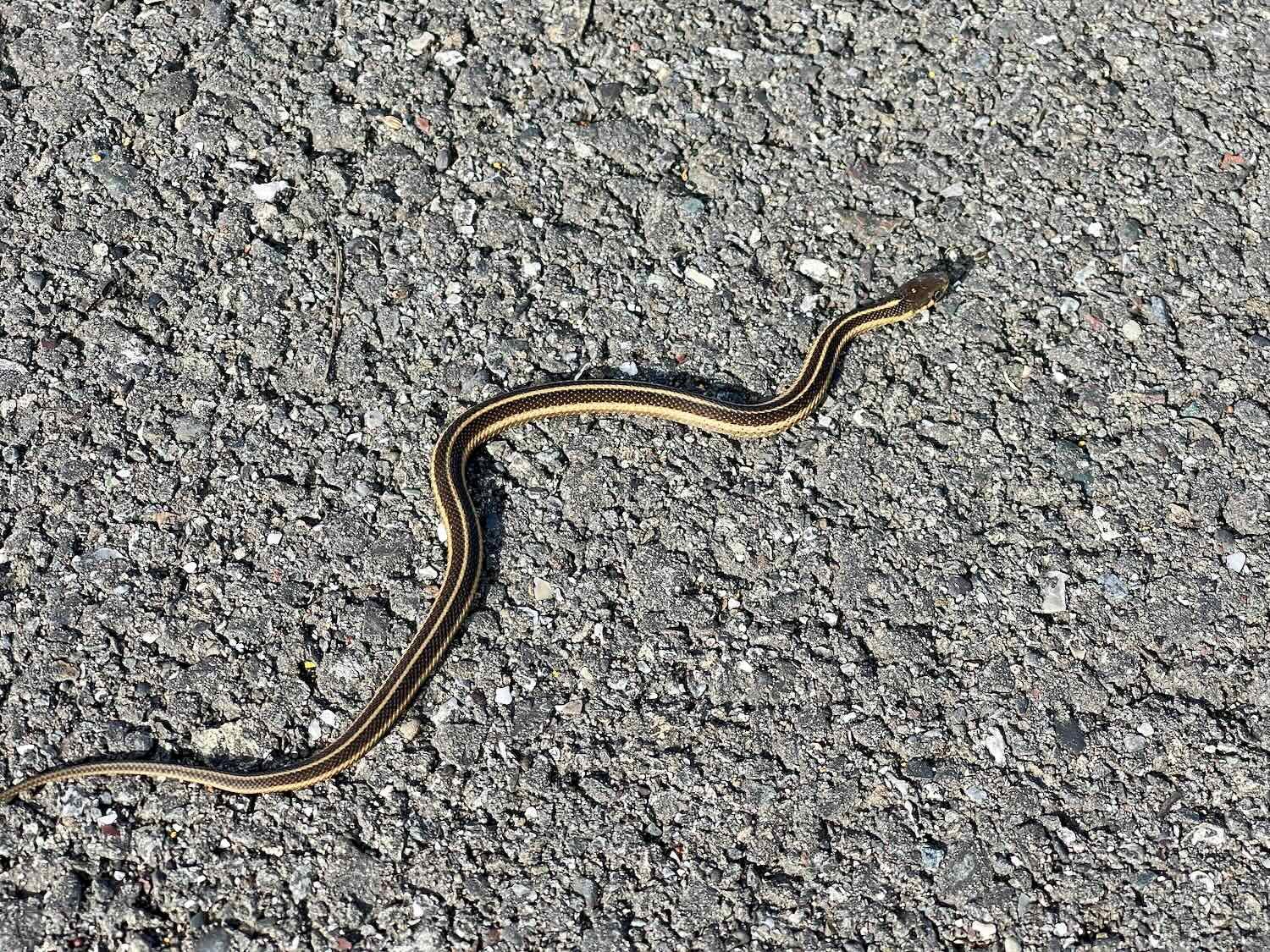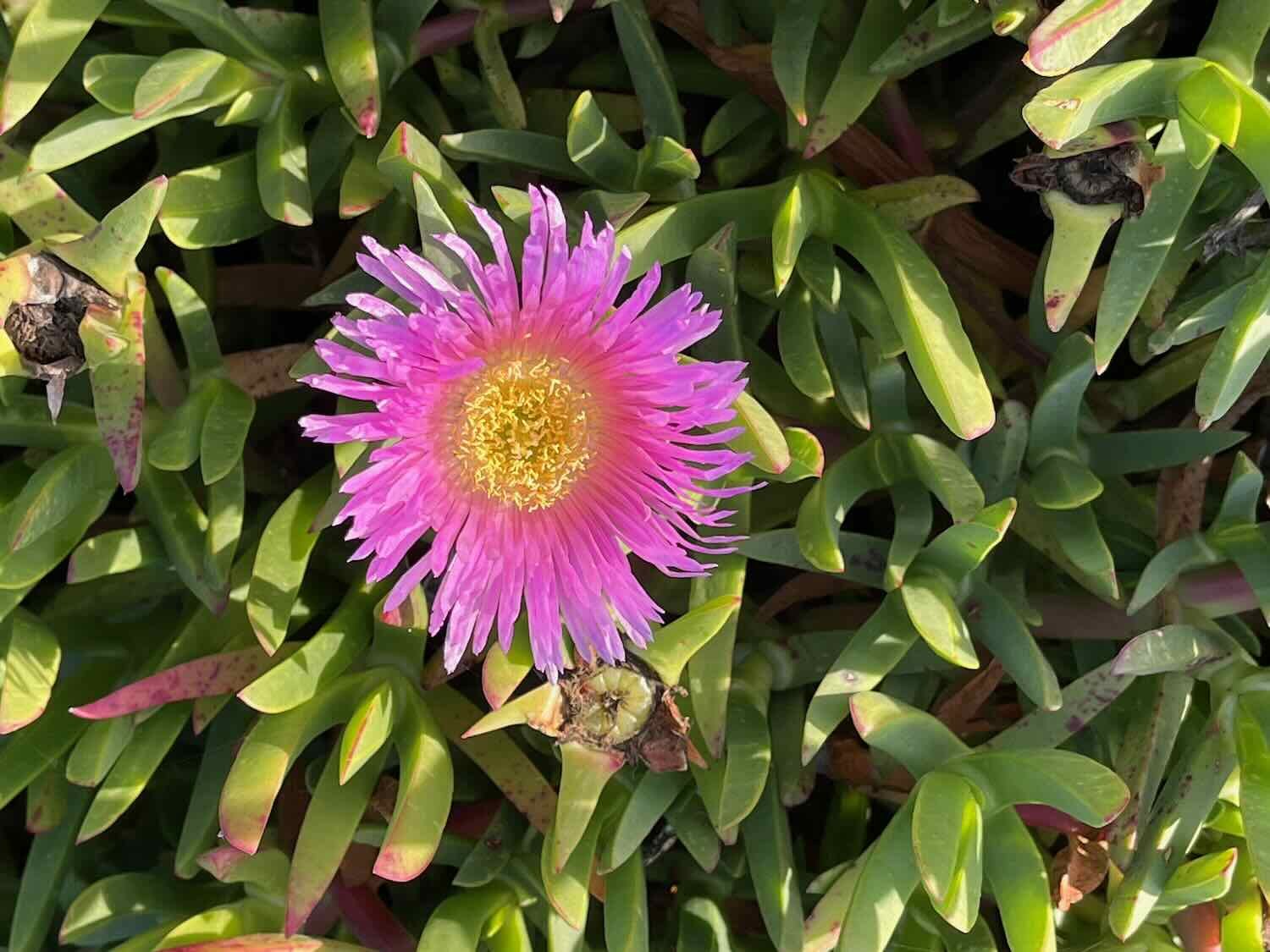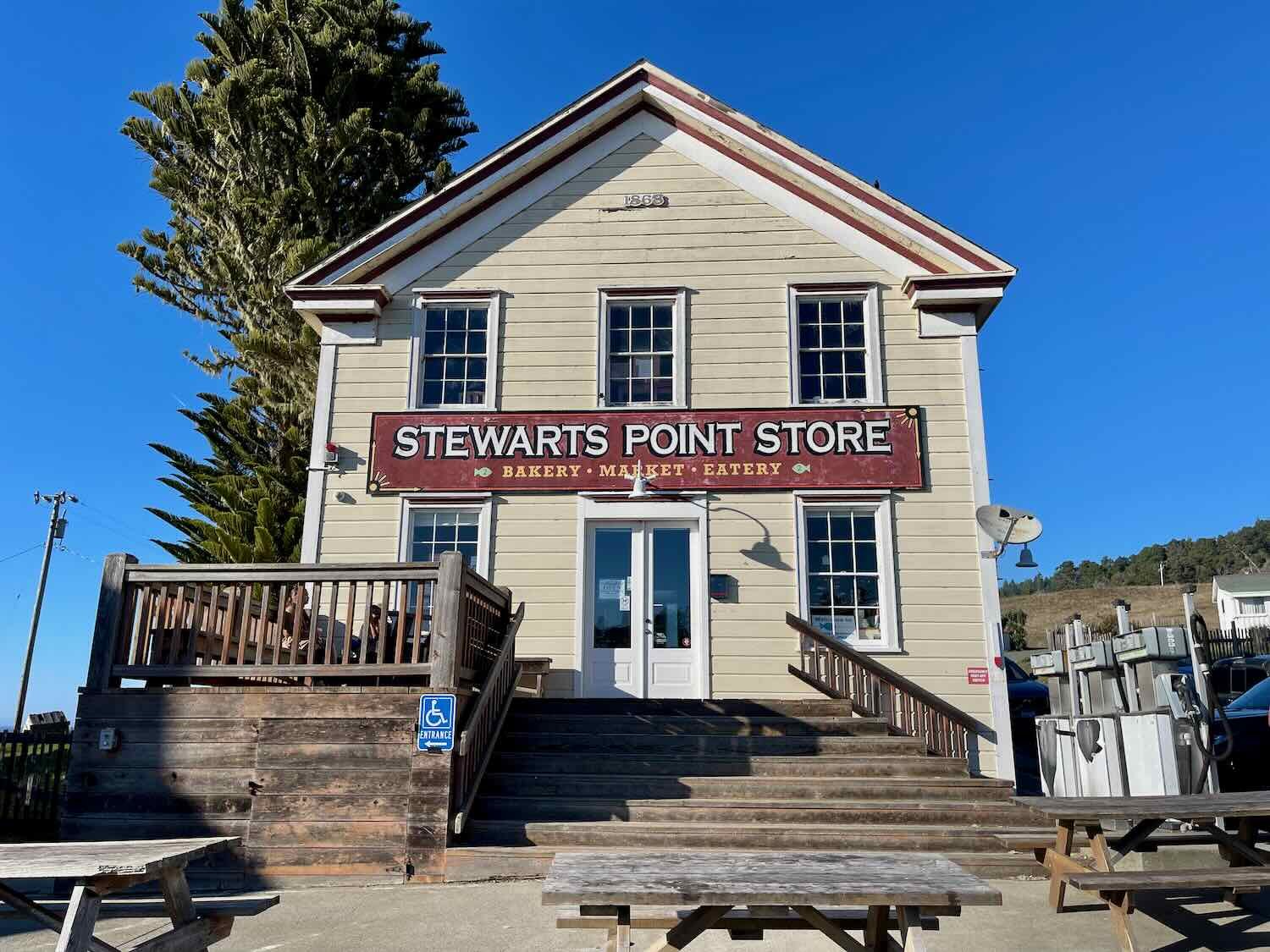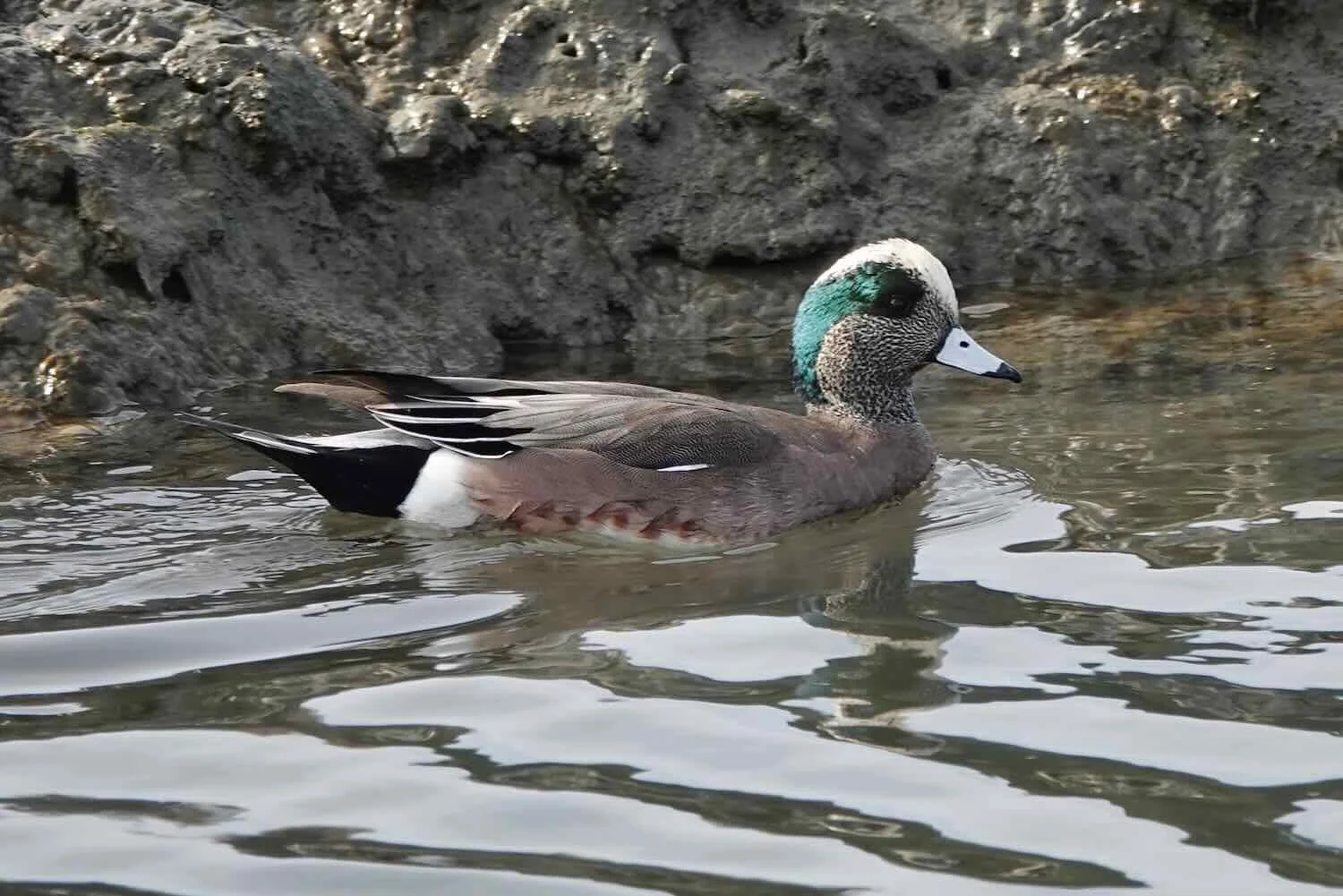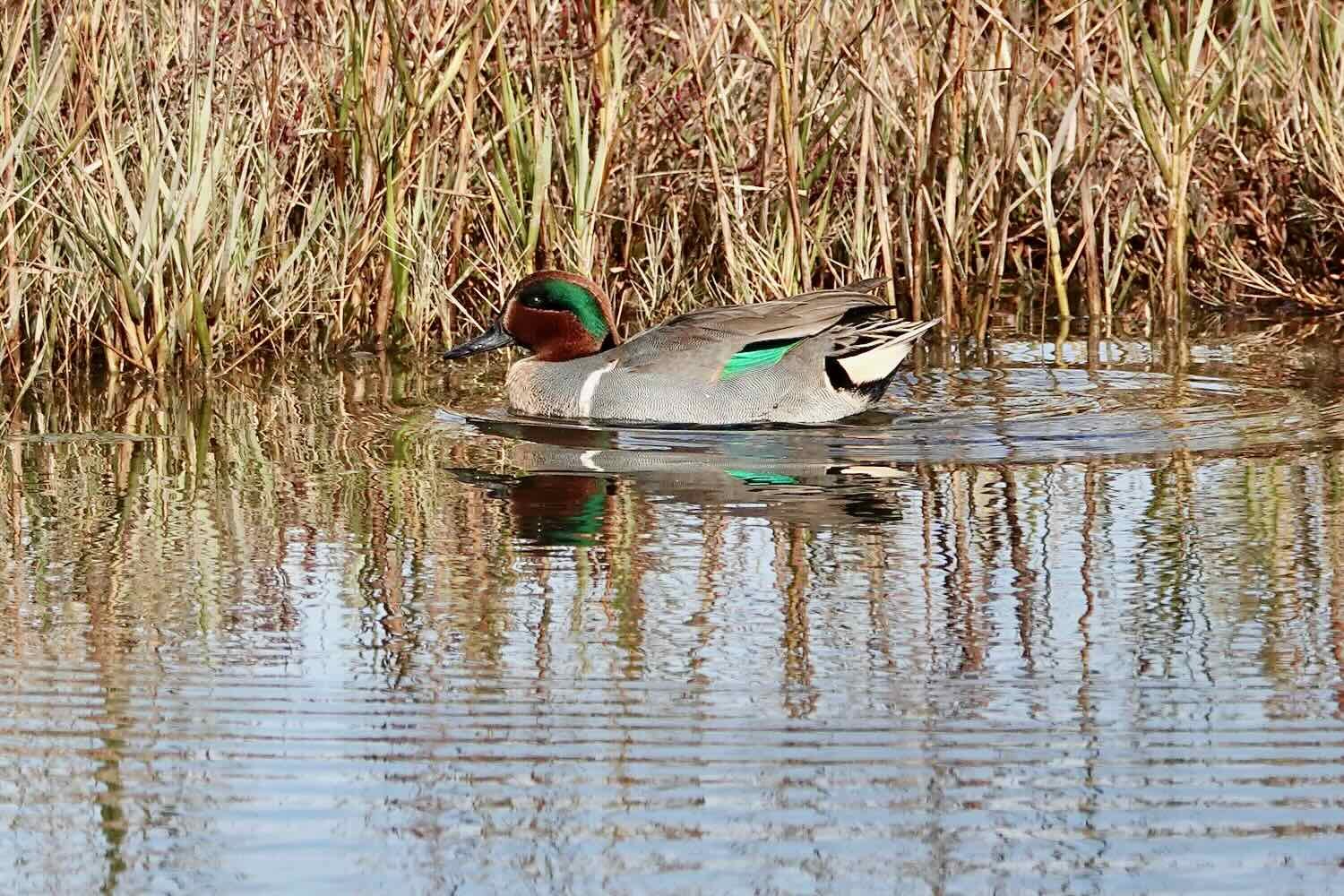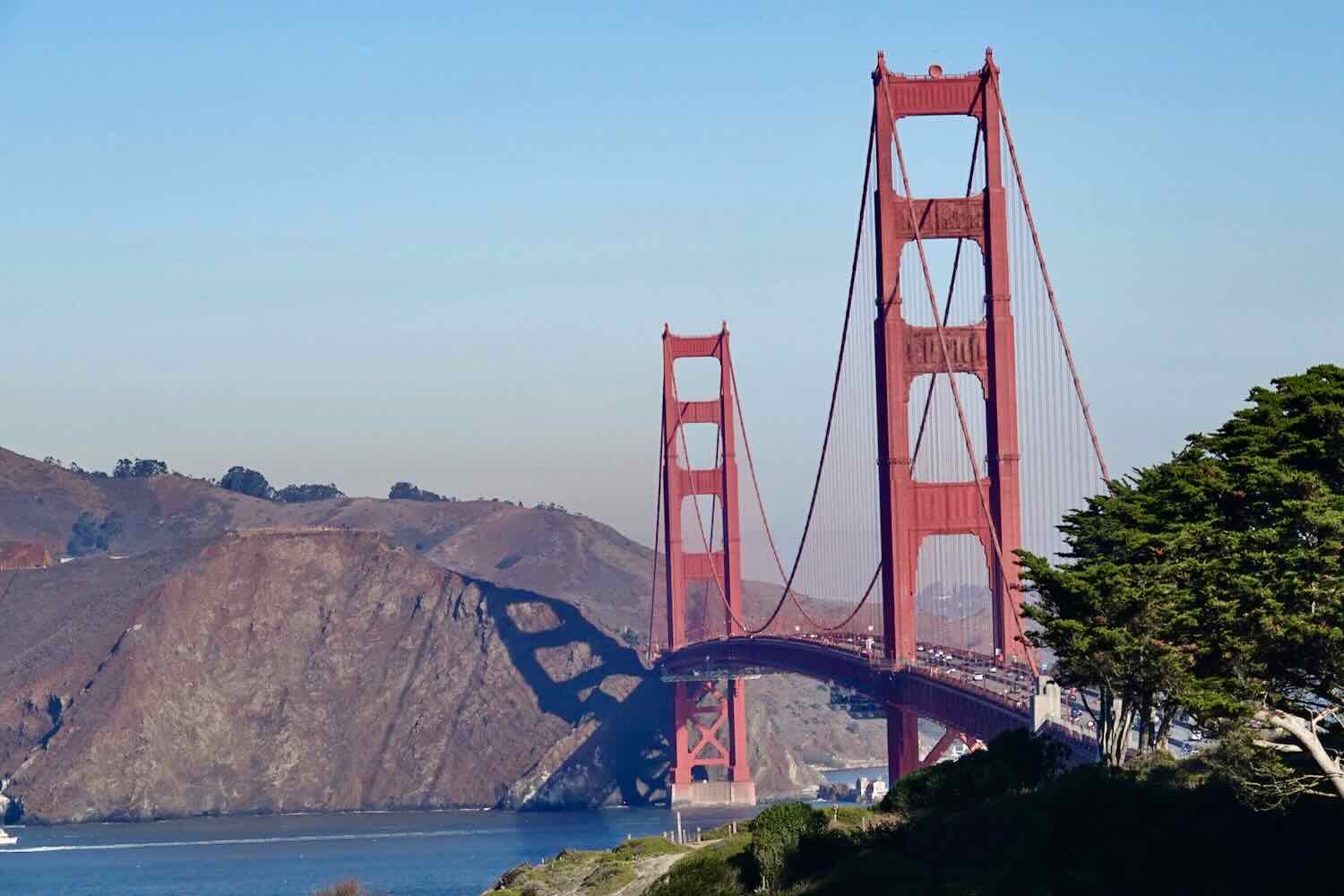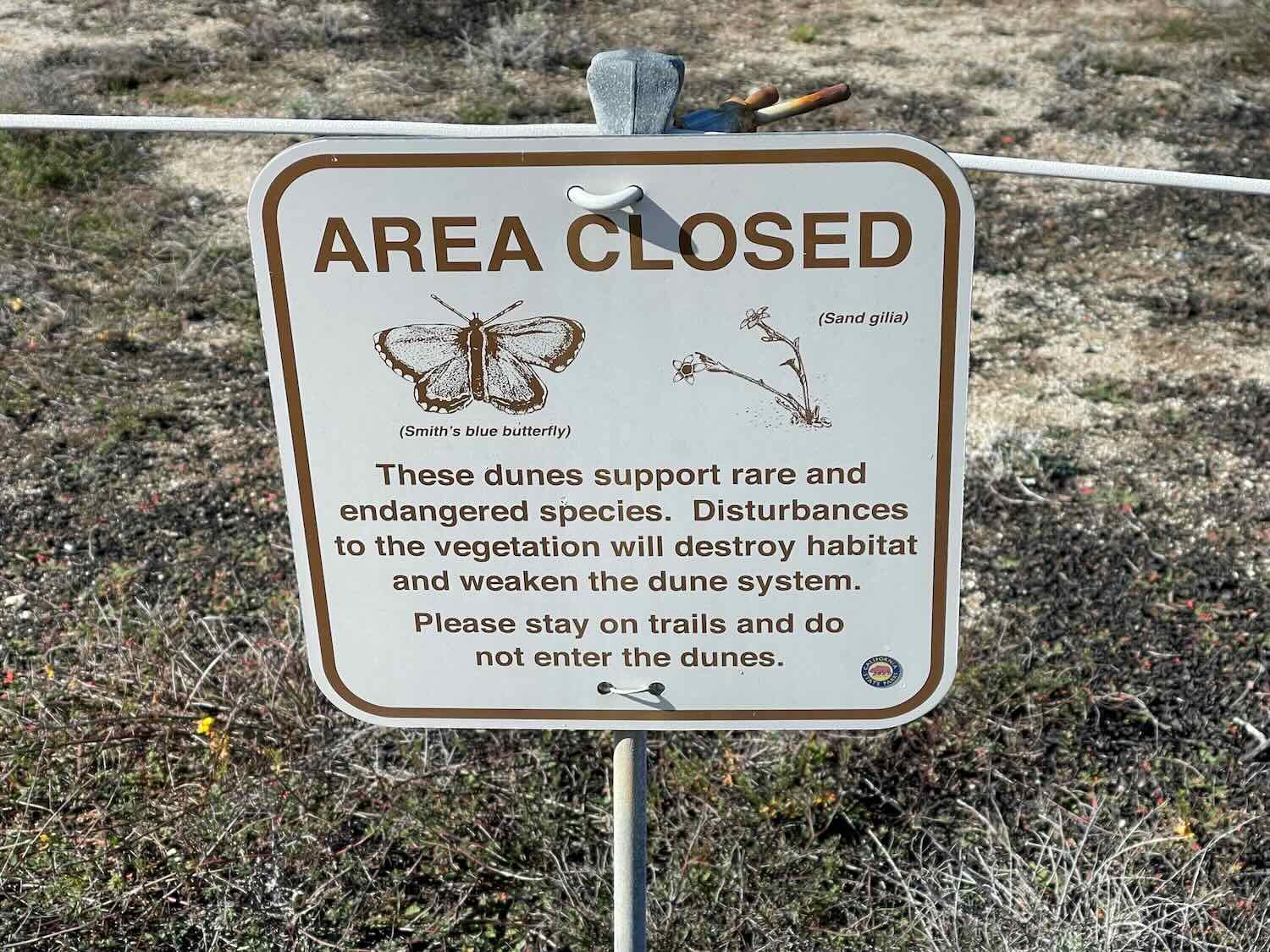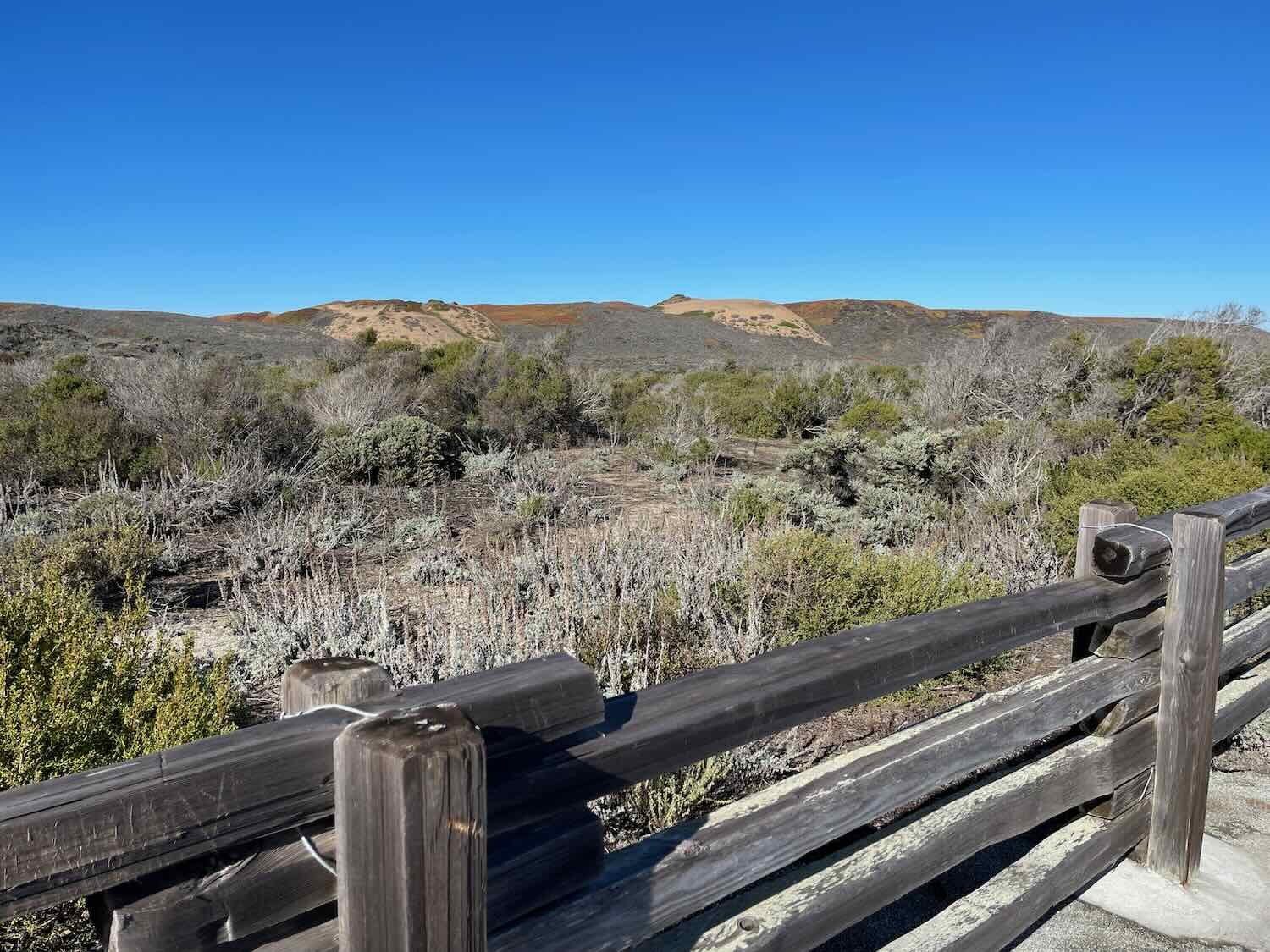Pacific Coast Route, Part 3: Cycling from Brookings, Oregon to Marina, California
8 November - 3 December 2022
8 November - Brookings, OR to Crescent City, CA (29.2 mi, 47.0 km)
9 November - Crescent City to Sue-Meg State Park, CA (57.0 mi, 91.7 km)
10 November - Sue-Meg State Park to Eureka, CA (31.7 mi, 51.0 km)
11-13 November - Layover in Eureka, CA
14 November - Eureka to Humboldt Redwoods State Park, CA (50.6 mi, 81.4 km)
15 November - Humboldt Redwoods State Park to Legget, CA (46.1 mi, 74.2 km)
16 November - Leggett to Cleone, CA (43.4 mi, 70.0 km)
17 November - Cleone to Manchester, CA (43.8 mi, 70.5 km)
18 November - Manchester to Salt Point, CA (40.9 mi, 65.8 km)
19 November - Salt Point to Bodega Bay, CA (28.5 mi, 45.9 km)
20 November - Bodega Bay to Lagunitas, CA (43.2 mi, 69.5 km)
21 November - Lagunitas to Mill Valley, CA (20.6 mi, 33.2 km)
22-25 November - Layover in Mill Valley, CA
26 November - Mill Valley to Half Moon Bay, CA (41.6 mi, 67.0 km)
27 November - Half Moon Bay to Santa Cruz, CA (52.6 mi, 84.7 km)
28 November - Santa Cruz to Marina, CA (38.1 mi, 61.3 km)
29 Nov-3 Dec - Layover in Marina, CA
The Coastal Redwood Zone
California’s temperate rainforests are damp and foggy for a reason. Sandwiched between the Pacific Ocean and the coastal mountain ranges, they are drenched with as much as 100 inches (250 cm) of rain each winter, when the mountains wring moisture out of storms that blow in from the sea. And in the summer months, a perpetual fog ensures that conditions remain cool and moist. The Northern California Coastal Forest’s dependence on these mists is so absolute that the ecoregion never extends more than 40 miles inland from the ocean.
The conditions within this coastal zone are remarkably consistent, and have been exceptionally stable over time. As a result, some species have evolved to the point where their natural ranges coincide almost perfectly with the extent of the ecoregion, a situation that is relatively rare. Most notably, coastal redwood trees - those mythical giants of the forest - are so closely associated with this area that it is sometimes referred to as the Redwood Ecoregion.
Crossing Into California
But we would see only a handful of mostly-cultivated redwoods on our first day out of Brookings, Oregon. The tree that really got our attention was a fan palm planted near the parking lot of our hotel. We really hadn’t expected to see a palm tree growing this far north. But the famously mild weather here must be suitable for a few, hardy palm species as well.
A cold-tolerant fan palm was the first palm tree we’d see as we headed south along the Pacific Coast. Brookings, Oregon, USA. Copyright © 2019-2023 Pedals and Puffins.
Our departure from Brookings got off to a rough start. Just ten minutes after departure, PedalingGal’s back tire suffered multiple, simultaneous punctures while cycling across a bridge leaving town.
We stopped on the bridge’s pedestrian walkway to assess the situation, and quickly determined that this was worse than the usual flat tire. There was a 3-inch long (7.6 cm), rusty nail that went straight through the tire - coming in through the tread and exiting through the sidewall. Plus, there was a gash in the tire that was bigger than just a puncture hole. And finally, there were 5-6 additional pinholes where we could see small amounts of sealant bubbling out. PedalingGal had not seen the object(s) that caused the damage, but whatever it was, the tire took a real beating.
A three-inch, rusty nail forced its way through the tread and sidewall of PedalingGal’s back tire. In addition, there were multiple other punctures. It took us a long time to get all the holes plugged. Brookings, Oregon, USA. Copyright © 2019-2023 Pedals and Puffins.
It took us 45 minutes to repair the tire, inserting successive tire plugs until we didn’t hear any more hissing. We ended up using a total of six Dynaplugs to staunch the leaks - three for the big gash, and another three for the nail. Fortunately, the sealant was sufficient to plug the rest of the little holes without having to use up any more plugs. Miraculously, the tire seemed to be holding air when we were done.
We rolled the bikes the rest of the way across the bridge and onto a grassy area, where we thought about what to do next. We considered adding more sealant to the tire because it had lost so much. But in the end we decided to wait and see if the plugs held. It would be a shame to lose a bunch more sealant if the tire plugs failed. After spinning the tire to distribute the remaining sealant as much as possible, we pumped it up and finally got back on the road. By then, we had lost an hour and 20 minutes of riding time.
Things improved substantially after that. We cycled past rows of fishing boats docked at the Brookings Harbor, followed by a pleasant ride through seaside suburbs. And before long we reached the California border.
Fishing boats in Brookings Harbor, Oregon, USA. Copyright © 2019-2023 Pedals and Puffins.
Welcome to California! This is the last US state we’ll cross before heading into Mexico. Oregon-California Border, USA. Copyright © 2019-2023 Pedals and Puffins.
After crossing the state line, the landscape became a bit more rural. The route alternated between hugging the coastline with gorgeous ocean vistas, and turning inland over rolling pastures. And although we had expected a rain-free day, a light rain started to fall around 11:30 in the morning, which lasted for the rest of the day.
Just after crossing the state line, we saw the first red-shouldered hawk of our trip. Smith River, California, USA. Copyright © 2019-2023 Pedals and Puffins.
An overcast sky brought light rain as we cycled along the coast. Smith River, California, USA. Copyright © 2019-2023 Pedals and Puffins.
We spotted a couple of Oreo cows (belted Galloways, one of our favorite breeds) out in a rural pasture. Smith River, California, USA. Copyright © 2019-2023 Pedals and Puffins.
We arrived in Crescent City a bit damp, but were warm and dry in our hotel room by dinner time.
Cycling Among the Redwoods
The next day we made it to the redwood forests. It was a long cycling day, covering 57 miles (91.7 km) with 4,100 ft of climbing (1,250 m). Plus, sunset was now at 5pm, so we felt a bit of pressure to keep moving throughout the day. But there were so many amazing sights to see along the route, we couldn’t help but stop often to take it all in.
Within an hour of our departure we started to see some of the big, ancient redwoods. We entered an area where three large state parks, plus a national park, are cooperatively managed to preserve the coastal redwood ecosystem along 40 miles of coastline (64.3 km). Between them, these four parks contain roughly half of all remaining old-growth redwood forests.
Entering the Redwood National and State Parks. South of Crescent City, California, USA. Copyright © 2019-2023 Pedals and Puffins.
Many years ago we had visited the redwoods by car. And we can honestly say that there is no comparison between cycling through the forest and driving. Cycling is a vastly more immersive and moving experience. We slowly worked our way over the big mountain ridges, traveling among the giant trees at a pace that helped us appreciate the grandeur of individual trees. At the same time, we were treated to the slowly unfolding spectacle of the forest as we passed between dark, damp areas in the shadow of the biggest trees, and more open, cathedral-like spaces where the sun broke through in beams of golden light. With each pedal stroke, we became more attuned to the feeling of timeless wonder that these forests project.
Cycling among the coastal redwoods. Del Norte Coast Redwoods State Park, California, USA. Copyright © 2019-2023 Pedals and Puffins.
A cathedral of trees, illuminated by shafts of sunlight. Murrelet State Wilderness, California, USA. Copyright © 2019-2023 Pedals and Puffins.
The coast, seen from the top of a 1,200 ft ridge. Del Norte Coast Redwoods State Park, California, USA. Copyright © 2019-2023 Pedals and Puffins.
At the bottom of the first big descent we stopped for a quick break at a roadside resort. Gigantic, wooden carvings of legendary lumberjack Paul Bunyan and his blue ox, Babe, marked the entrance to the resort.
Stopping for a quick visit with Paul Bunyan and Babe, the ox. Note the tiny size of the cyclist in the lower right corner (near Babe’s foot). Trees of Mystery, California, USA. Copyright © 2019-2023 Pedals and Puffins.
By the time we arrived in the town of Klamath it was time for lunch. While PedalingGal was inside a store, PedalingGuy momentarily stepped away from his food, which he had set on a picnic table. Within just a couple of seconds, 15 crows descended on the table and made off with one of his chicken tenders. It was astonishing how quickly those birds pulled off their heist. Clearly, this was not their first caper. PedalingGuy won’t be making that mistake again. Throughout the rest of our lunch, the crows perched around us, just out of reach, cawing to each other. It felt like they were plotting their strategy for the next robbery. Fortunately, they weren’t as aggressive as the birds in Hitchcock’s movie. But they were a pest, nonetheless.
A golden grizzly stands guard at the crossing of the Klamath River. Klamath, California, USA. Copyright © 2019-2023 Pedals and Puffins.
Just after crossing the Klamath River, we began the second big ascent. About halfway up the hill, our route turned off the main road and onto a lightly-traveled, scenic byway through another redwood forest. It was magical. The road wandered through forests dotted with huge, ancient trees. They can reach heights of 320 ft (97 m) - taller than a 30 story building. By this time the sun was at its peak, and shining above. But the forest floor was dimly lit - shadowed by the canopy of trees and a persistent mist. As beams of light broke through, you could see the mist falling and water dripping off of the redwood leaves. Ferns grew everywhere, in shaggy heaps on the forest floor and also on the trees.
Shafts of light pierce the canopy of coastal redwoods, making for inspirational scenery. Prairie Creek Redwoods State Park, California, USA. Copyright © 2019-2023 Pedals and Puffins.
Another big descent brought us down and out of the redwood forest, into an area known for its large population of elk. Almost immediately, we spotted two bulls lounging on a lawn. However, when we reached a spot called Elk Meadows, we were in for a real treat. A very large herd was working its way across a field of tall grass. The bulls weren’t bugling or chasing after the females. All of the animals were completely focused on grazing. The group slowly made its way toward us, getting quite close before we decided we had better move along. Twenty minutes later, we saw three more handsome bulls out in a field.
A herd of several hundred elk was grazing close to the road in Elk Meadows. Prairie Creek Redwoods State Park, California, USA. Copyright © 2019-2023 Pedals and Puffins.
Later, a handsome bull elk strutted across an open field. Orick, California, USA. Orick, CA. Copyright © 2019-2023 Pedals and Puffins.
When we finally arrived at Sue-Meg State Park, we discovered that the hiker/biker campsites were soaking wet. Everything - the grass, the soil, the trees above, the rocks, the tables - was covered with a thick sheen of water that seemed to have coated all of the surfaces like a slightly slimy shellac. Even though it had been sunny and warmish that afternoon, few rays of sun had penetrated down to the forest floor in the hiker/biker sites. The surrounding trees ensured that all moisture would remain where it was, with little hope of evaporation. (We would soon come to realize that this was the normal state of affairs when camping among redwoods. It is always wet.)
The light was fading quickly, but we wanted to catch a glimpse of the sunset before it was all over. In the three weeks since we had arrived on the Pacific Coast, we had developed something of a tradition of watching the sun set over the ocean whenever possible. So we quickly decided on a spot for the tent and pitched it as fast as we could. Then we jogged the short distance to the edge of a high bluff overlooking the sea. By the time we found a spot where we could see through the trees, the sun was already below the horizon. But the sky still had a lovely glow.
Twilight settles over a high bluff near the Pacific Ocean. Sue-Meg State Park, California, USA. Copyright © 2019-2023 Pedals and Puffins.
Back at the hiker/biker camp we ate our dinner in the dark. We’d been carrying a couple of plastic sheets, so we were able to cover the table and one of the picnic benches to keep our clothes and gear from getting soaked. But the air was so wet that nothing stayed dry for long.
Fortunately, nearly all of the California State Parks where we would camp (including this one) had food boxes installed in the hiker/biker camping areas. It was wonderful to be able to safely stow our food nearby, and foil any marauding campground raccoons.
By the time we went to bed we were both chilled to the bone. We burrowed into our sleeping bags wrapped in all of the warm clothes we had. That included a base layer, insulated vests/sweaters, down jackets, balaclavas, and a pair of insulated booties for PedalingGal. Even PedalingGuy had trouble with cold feet, and he ended up using a pair of foot-warmers inside his sleeping bag to create some extra heat. With every piece of dry clothing pressed into service, we were just warm enough to fall asleep.
Abundant Wildlife on the California Coast
Although conditions were a bit cold and damp for our liking, the local wildlife didn’t seem to mind at all. Throughout the next day we were delighted to see a wide variety of animals on land and in the sea.
As we packed up our wet gear in the morning, a pair of gray jays stopped by our campsite to see if we’d left any scraps on the table. Moments later a Steller’s jay came by, also hoping we’d been careless with our food. They were all disappointed.
A bold gray jay didn’t wait for us to depart before coming to our campsite to hunt for some crumbs. Sue-Meg State Park, California, USA. Copyright © 2019-2023 Pedals and Puffins.
The first couple of miles of cycling closely followed the beautiful coastline. A big group of sea lions had hauled out onto one of the offshore rocks. Some of them were quite high above the water, on ledges that seemed almost impossible for them to reach by waddling on their flippers. We were pretty impressed with their rock-climbing skills. There also was a large raft of sea lions swimming in a tight group right next to one of the sea stacks. In the same area, we spotted a few gray whales surfacing, a bit farther out to sea.
Sea lions chilling out on an offshore rock. We wondered what the sea lions swimming at the base of the rock were up to. Seawood Cape Preserve, California, USA. Copyright © 2019-2023 Pedals and Puffins.
Blue skies over the Northern California coast. Seawood Cape Preserve, California, USA. Copyright © 2019-2023 Pedals and Puffins.
When we reached the town of Trinidad, we were still feeling chilled. Fortunately, the little store in town had just what we needed. We enjoyed a couple of hot breakfast burritos while perched at a table by the window. Slowly the warmth crept back into our bodies. It was bliss. We ended up spending an hour there, appreciating the comfort of the little cafe.
South of Trinidad the road became narrow and rough in spots, as it hugged the coast. Although the hills were pretty short, they tended to be very steep. We offset the effort by taking frequent stops to enjoy the scenery. The unpaved Hammond Trail was particularly fun on our Tumbleweed bikes.
Along the Hammond Trail we saw several flocks of wrentits. This one posed for the camera. Clam Beach County Park, California, USA. Copyright © 2019-2023 Pedals and Puffins.
In the town of Arcata we stopped at a bike store to pick up a new pair of cycling gloves for PedalingGal, and a couple of bottles of tire sealant. PedalingGal’s tire seemed to be holding air well after the major patch-up a couple days ago. So we figured it would be safe to add more sealant at this point. Unfortunately, they didn’t have any Dynaplugs in stock to replace the six we had used in the same incident. But the guys at Revolution Cycles were still really helpful. They called their sister store in Eureka, which did have the plugs we needed. The Eureka store agreed to set them aside for us, for pickup when we were in town.
It was a quick, 45 minute ride from Arcata to our hotel in Eureka. But we still managed to spot one more cool animal along the way. A coast garter snake was sunning in the bike path as we passed by.
Our highest priority after arriving in Eureka was to get to the US Post Office to pick up a couple of packages that we had sent to ourselves via general delivery. The most important one was a new front bike rack for PedalingGuy. He was finally going to get the chance to replace the one that had been damaged three weeks ago when a luggage strap had gotten entangled in his front wheel. We were looking forward to getting that repair done. PedalingGuy also went to the Revolution Cycles store in Eureka to retrieve the new Dynaplugs. All of the errands went smoothly, and set us up for a couple of quiet days in Eureka, waiting out another set of rain storms.
Rain Days in Eureka, California
In addition to replacing PedalingGuy’s front rack, and adding sealant to PedalingGal’s ailing back tire, we took a trip to a pharmacy to get Covid-19 booster shots. But most of our time was focused on developing a strategy for getting all of our gear ready for the crossing into Mexico. Even though arrival in Mexico would still be at least a month away, we had a lot of preparation to do. Most importantly, we needed to:
compile a list of all the things we would need to fix and/or replace before leaving the United States,
figure out a place close to the Mexican border where we could receive packages,
make sure the post office at that location would accept general delivery mail, and
get everything ordered, so that it would arrive in time.
We settled on Encinitas, California as our target location because it had both an REI store and a US Post Office that handled general delivery. Then we placed a blizzard of online orders. We ended up replacing quite a few items that had worn out, or where we felt we needed an upgrade. We’ll provide a final list of all those items in a later blog post.
During a break in the rain we had a chance to get out and about. Eureka has a nice waterfront, where we enjoyed a pleasant afternoon walk. The town also has a number of colorful murals, and a grand, old Victorian mansion that is now an exclusive, private club. Sitting on top of the tallest hill in town, the mansion dominates Eureka’s skyline. But its somber, moss-green colors give it a bit of a spooky feel. From a distance, it's easy to imagine the Munsters living there. In fact, it is rumored to have been the inspiration for Disney’s haunted mansion.
Mural in downtown Eureka, California. USA. Copyright © 2019-2023 Pedals and Puffins.
The Carson Mansion was built by a lumber baron in 1885, and is considered to be the most grand Victorian home in America. But its gray-green coloring makes it look like it could be haunted. Eureka, California, USA. Copyright © 2019-2023 Pedals and Puffins.
Lumber History in Humboldt Bay
The route out of Eureka took us along a quiet bike path that skirts the shore of Humboldt Bay. The area was an old industrial district, which has been restored to productive marshes and wetlands. There were lots of informational signs along the path describing the area’s history, especially the recent past when the entire shoreline was covered with sawmills. The waters of Humboldt Bay were used to store the unprocessed timber in “log ponds.” Even now there are a couple of modest-sized logging operations. But most of the really big sawmills closed in the 1980s when legislation halted the cutting of old-growth redwood trees.
There are still a few, active lumber yards on the shores of Humboldt Bay. They now focus on harvesting Douglas fir, instead of the giant redwoods. Eureka, California, USA. Copyright © 2019-2023 Pedals and Puffins.
We read about the history of the lumber business on signs that lined the now-quiet bike path through the marsh. Eureka, California, USA. Copyright © 2019-2023 Pedals and Puffins.
After cycling for about 2.5 hrs through agricultural areas, we stopped for a snack in the small town of Loleta (pop. 600). While we were relaxing in the town’s central plaza, a local woman came over to chat. She had lived in the area for 15 years, and seemed to really enjoy sharing stories about the town with us. There was a big, falling-down factory nearby that we had been curious about. She said it had been a dairy processing plant, most recently making cheese and powdered milk. But it had shut down some time in the past five years. Then in December 2021, a 6.4 magnitude earthquake shook the town and caused part of the roof to collapse. The woman said she lived just across the street from the factory, and that the sound of the collapse was frighteningly loud. She was a very sweet lady, and we enjoyed visiting with her.
Cycling the Avenue of the Giants
Just before 1pm we re-entered the realm of the redwood trees. We turned away from the main highway, and began cycling on a road known as the Avenue of the Giants - another lightly-traveled, quiet road through large groves of ancient trees. Once again we were plunged into the mystical, dimly lit, damp and regal environment that exists among the enormous columns of impossibly-tall trees. And just as before, we pedaled along the narrow, winding road with a deep sense of awe.
Dwarfed by the immense size of an ancient coastal redwood. Avenue of the Giants, Humboldt Redwoods State Park, California, USA. Copyright © 2019-2023 Pedals and Puffins.
Toward the end of the day we stopped at a small roadside store. After snapping a photo by the “Redwoods” sign and picking up a few supplies, we were getting ready to depart. That’s when two other long-distance cyclists arrived. Maggie and Dawid were from Poland. They had already been on the road for 1.5 years, taking their time and enjoying the experience. They had cycled across Northern Europe, and flew to North America. Then they biked from New York City to Chicago, up to Toronto, and across Canada before heading down the Pacific coast. Like us, they were looking forward to heading south and reaching warmer weather. But for today, they said they were planning to cycle five miles farther than us. Perhaps we would see them again in the future.
A quick supply stop along the Avenue of the Giants. Redcrest, California, USA. Copyright © 2019-2023 Pedals and Puffins.
Two other cyclists heading South. Redcrest, California, USA. Copyright © 2019-2023 Pedals and Puffins.
We arrived in the Humboldt Redwoods State Park Campground in the mid-afternoon. After checking in, we were approached by another cyclist who was staying at the hiker/biker campsite next to ours. Astonishingly, it was none other than Michael, the cyclist we had met on the Alaska Highway in mid-July when he had just recovered from a bad case of Covid-19.
He had cycled back to his home in Portland, spent a few weeks there, and was now heading south to join some friends in San Francisco for the Thanksgiving holiday. He told us that after that he planned to circumnavigate the USA by following the Southern Tier Bicycle Route, then cycling up the east coast to New England. We heard all about his ride through Alaska, and down the Stewart Cassiar-Highway, which we had cycled as well. We also learned that he was traveling in the company of two guys from Germany (Ben and Max), who were currently off exploring the redwoods nearby. It was amazing to run into Michael again after all this time, and to find ourselves staying in the same campground. We marveled at the fact that we hadn’t seen any fellow long-distance cyclists for more than a month, and suddenly we were traveling in close proximity to five of them. It was a real surprise.
After setting up our tent, we went for a walk among the giant trees that grew throughout the campground. Many of the campsites were empty, resulting in a quiet and peaceful stroll among the redwoods.
Remains of a massive redwood tree, as big as a house. Burlington Campground, Humboldt Redwoods State Park, California, USA. Copyright © 2019-2023 Pedals and Puffins.
Much like other campgrounds where we had slept among the redwood trees, the conditions here were very damp and remarkably cold. Everything, especially the picnic table, was permanently soggy. After dark, the temperature dropped close to freezing. The clouds created by our breath when we exhaled reflected the light from our headlamps. We did our best to eat dinner and get ready for bed without getting too wet, and were settled in the tent by 6:30pm.
The next morning was even more frigid. A light fog hung in the air, causing it to be especially chilly in the dark understory of the redwoods. There wasn’t any ice on the tent, but the air certainly felt like it must be around freezing. And once we were cycling, we saw frost on the grass in open fields where there were no giant trees.
The route ran parallel to the South Fork Eel River for many miles. Every so often the road would get close to the river, opening up lovely views of the forest edge. Avenue of the Giants, California, USA. Copyright © 2019-2023 Pedals and Puffins.
Before long we arrived in the tiny town of Myers Flat (pop. 126), a touristy enclave with a rustic flair. As we rode by, we saw Michael, Max and Ben enjoying a hot drink at the coffee shop. It was tempting to stop, but we were warming up enough by cycling so decided to keep going.
Old-fashioned storefronts in Myers Flat. The sign above the doorway refers to the town’s unofficial slogan, “Myers Flat is Where it's At.” Avenue of the Giants, California, USA. Copyright © 2019-2023 Pedals and Puffins.
We spent a couple of more hours cycling before reaching the end of the Avenue of the Giants. We continued to stop frequently to marvel at each new sight along the way. The tranquil majesty of the coast redwoods was something we would always remember.
Toppling over is the most common, natural way for giant redwoods to die. They have very shallow root systems, which intertwine with the roots of other trees in the forest to help hold them up. But when a tree becomes really huge, it can become too heavy for its roots. Avenue of the Giants, California, USA. Copyright © 2019-2023 Pedals and Puffins.
After leaving the Avenue of the Giants, our route alternated between riding on the shoulder of Hwy 101, and taking detours onto side roads that dipped back into younger redwood forests. Out on the highway it was sunny and warm. But each time we pedaled among the redwoods it was very cold. We were constantly adjusting our clothing layers to compensate.
In redwood country, there are many individual trees that have been given names as roadside attractions. We stopped to admire The Grandfather Tree, which towers above the small town of Garberville. At 1,800 years old, it’s really more of a middle-aged tree (the oldest known coast redwood is 2,250 years old). But it’s particularly impressive because it stands alone, and you can easily see the whole tree. At 265 ft in height (80 m), it’s as tall as a 25 story building.
Dubbed “The Grandfather Tree,” this lone redwood towers over the surrounding buildings. You can just barely see PedalingGal standing with her bike near the base of the tree. Garberville, California, USA. Copyright © 2019-2023 Pedals and Puffins.
We ended up suffering a major delay in the middle of the ride, when PedalingGal realized she had lost a rubber eye-cup from her binoculars. This was not a good thing, because the exposed metal beneath the eye cup was likely to scratch her glasses when using the binoculars, if she wasn’t extremely careful. The piece seemed to have gone missing while we were stopped along a gravel road to photograph some birds. So we ended up spending 1.5 hrs searching in the sand and grass along the roadside for the lost eye cup - to no avail. It felt like a disaster because such specialized replacement parts can take a long time to order, and shipping is particularly difficult to arrange when you are constantly on the move. Plus, we would soon be in Mexico where it might become nearly impossible to get the part. We would have to get to work on procuring a replacement as soon as possible.
We finally arrived at the Rock Creek Campground in the fading light. Michael, Ben and Max were already there. Maggie and Dawid showed up soon after us. Among the seven of us, we pretty much filled up the hiker/biker area.
There was a restaurant and grill just across the road from the campground, and we were highly motivated to get there before they closed. So we quickly pitched our tent, stowed our food in the secure food box provided by they campground, and headed back to the main road for dinner.
Unfortunately, the grill only had outdoor seating. PedalingGal could hardly hide her disappointment, because she had been dreaming of being warm and dry for dinner. But at least we enjoyed a hearty, hot meal. While our dinners were being cooked, we went inside the little shop next door. We stood around, sipping hot chocolate and visiting with the store owner. That helped to warm us up. Then we headed back outside to eat at a picnic table under strings of twinkling lights.
The Cycling Social Club
As we were getting ready to leave in the morning, we visited with the other cyclists. Micheal’s sleeping pad had developed a leak during the night, and he was working on locating the hole so he could patch it. We learned that Max and Ben had started their ride in Eureka, California, and were taking two weeks to cycle to San Francisco. PedalingGuy and Maggie chatted about Instagram. Then we hit the road.
Perhaps it was good that the morning was very cold, because the route immediately headed uphill for a 6-mile climb. The ascent warmed us as we cycled past fields of frosty grass.
We had skipped breakfast, with the expectation that we would stop and eat once we found a spot where we could stay warm. That finally arrived at the top of the 2,000 ft pass over the coastal range. Right at the summit there was a sunny pull-off with a nice, flat, gravel area. We decided to set up our camp chairs and have breakfast in the sun.
But before we could get ourselves settled in the chairs, Maggie and Dawid arrived. Happy to rest at the top of the climb, they stopped to visit. Within minutes Ben, Max and Michael arrived, too. Our quiet breakfast stop tuned into a major event - the cycling social club. Everyone was talking, sharing stories, and having fun. Max and Ben unpacked a kettle and brewed some tea, sharing it with everyone along with some cookies. Maggie had a tripod, which PedalingGuy used to take photos to share with the whole group. It was a delightful, roadside party.
The Cycling Social Club, sharing a moment on a sunny ridge top in California’s coastal range. Hwy 1, California, USA. Copyright © 2019-2023 Pedals and Puffins.
As we were packing up our things to go, PedalingGal realized that her back tire was very soft. We pumped it up, located the puncture, plugged it up, and got ready to go. But within minutes the tire was soft again. There was a second puncture. So we went through the same procedure, and we plugged that one, too. While we were messing with our tire, Ben realized that one of his tires had gone flat as well. There must have been some tire-shredding debris on the side of the road. He was still working on patching his tire tube when we headed out, eager to get sealant sloshing around in PedalingGal’s tire to help mend the holes.
Fortunately, the tire held air and we sailed down the far side of the mountain towards the sea.
In the valley below, we were cycling past an open field when PedalingGuy noticed a set of antlers sticking up above the tall grass. We stopped to see a huge bull elk that was resting on the far side of a clearing, not that far away. As we were watching, a second bull that was much closer, stood up out of the grass to check us out.
Both of them looked exhausted. “Nearly dead,” according to PedalingGuy. They were probably worn out from all the fighting and conflict that comes with the fall rut. Part of the antlers of one of the bulls was broken off, probably damaged in combat over mating rights with the females. Hopefully these two champions will have enough time to rest and recover before the tough winter season sets in.
A battered bull elk watches us carefully, while resting in a nearby field. Rockport, California, USA. Copyright © 2019-2023 Pedals and Puffins.
Before long we were back beside the ocean, once again. We had stopped to admired the rocky shoreline from a roadside overlook, when a friendly couple from Montreal came over to chat. They were traveling in an RV, and joked that they weren’t going much faster than we were. They had first seen us near the Grandfather Tree, but had passed us several times since then. Their trip had taken them from Montreal to Alaska, and then back across western Canada to the Pacific Coast.
As we were visiting with the Montrealers, Michael, Ben and Max arrived. For the third time that day, our gathering became a festive event. We got a photo of the Germans’ mascot - a plush, stuffed, banana slug (yes, banana slugs are a real thing in the Pacific Northwest). They were very enamored of that slug.
Ben and Max’s mascot, a plush banana slug. Hardy Creek Lookout, Hwy 1, California, USA. Copyright © 2019-2023 Pedals and Puffins.
The final 3.5 hrs of cycling hugged the coast in a continuous rollercoaster of short-but-steep hills. We spent a surprising amount of time in our lowest gears, as we labored up the final stretch to the top of each hill. During the first hour or so we stopped often for photos. But with all of the socializing we had done earlier in the day, the afternoon started to pass us by. Finally, we knuckled down to put in the miles, and get to our next campground before dark.
A sea arch near Westport, California, USA. Copyright © 2019-2023 Pedals and Puffins.
Scenic coastline south of Westport, California, USA. Copyright © 2019-2023 Pedals and Puffins.
When we finally arrived at MacKerricher State Park, we had trouble locating the hiker/biker camping area. Fortunately there was a cell signal, so we were able to consult the park’s website and hone in on the right spot. We had actually passed it, so we had to backtrack a bit. But we eventually found it. We pitched our tent as darkness fell. Surprisingly, none of the other cyclists arrived. We’re not sure where they stayed that night, but this was the last day we would see any of them.
The campground was very close to the ocean, so we could hear the waves all night. In the darkness, a great-horned owl hooted nearby.
The Mendocino Coast
For the next three days our route would closely hug the Pacific Coast. The big redwoods were gone. Instead, we cycled through a mix of seaside parks, public beaches, coastal towns and rural pastures.
The first five miles or so between our campground and Fort Bragg (the biggest city we would see along the Mendocino Coast) followed an easy rail trail. The path was nearly straight, and practically flat. It had been built to transport logs to the coast for processing and shipping. Now it affords great views of the rocky shoreline and sandy coves. We were especially entertained by a committee of six vultures sunning themselves close to the trail. Each one perched atop a fence post, with its wings spread to catch maximum sun rays.
Turkey vultures, sunning themselves along the bike path. MacKerricher State Park, California, USA. Copyright © 2019-2023 Pedals and Puffins.
We also were impressed by the endless blanket of iceplants growing on the dunes. The red glow of the leaves in fall was pretty attractive. Unfortunately, like many species that create uniform ground cover, iceplant is an invasive weed. It is native to South Africa, but was introduced in North America more than 100 years ago by the railroads to help stabilize dunes and prevent erosion. It now thrives in coastal California, where it chokes out all other species of plants.
However, most of the coastline was not comprised of sandy dunes. We cycled along the tops of rocky cliffs, with picturesque sea stacks out in the surf. Inland from the cliffs, most of the habitat was open fields, dotted with farm buildings and small clumps of trees. One thing that made a big impression on us was the very large number of red-tailed hawks. They were incredibly abundant. It seemed like we saw around five red-tailed hawks per mile, usually soaring over the open fields. They were everywhere.
A garden of sea stacks. Cuffey’s Cove, California, USA. Copyright © 2019-2023 Pedals and Puffins.
Farm buildings in the mist. South of Mendocino, California, USA. Copyright © 2019-2023 Pedals and Puffins.
A roadside sign in the small town of Elk (see below) encouraged us to stop and get some dinner. The town also boasts the Elk Garage, where presumably people have brought their elks for repair since 1901.
It was getting dark by the time we arrived at the KOA Campground in Manchester, California. Private campgrounds always cost more than state and local parks. But we had camped out in the damp redwood forests at near freezing temperatures for the past three nights, and PedalingGal was eager for a bit of comfort. So we sprung for a cabin. The cabin was pretty bare-bones, with no bedding, hardly any room for the bikes, and a pretty weak heater. But it was dry and relatively warm, and that was the point. There were also a couple of electrical sockets, so we were able to charge up our depleted devices.
Sunset toward the Point Arena Lighthouse. Manchester State Park, California, USA. Copyright © 2019-2023 Pedals and Puffins.
Drying off and warming up in a tiny KOA cabin. Manchester, California, USA. Copyright © 2019-2023 Pedals and Puffins.
One of the things we’ve noticed while cycling along Hwy 1 is that a lot of songbirds get hit by cars on this road. We had seen a surprising number of dead songbirds on the roadside. But as we cycled south out of Manchester, we had the opportunity to do some good. We spotted an immature Townsend’s Warbler on the shoulder of the road, alive, but looking quite dazed. We picked it up and gently placed it in the grass, off of the road. It flapped its wings and blinked a few times, so we were glad to see that its neck wasn’t broken. Hopefully with some rest it would regain its strength and composure, and be able to fly away.
We moved this dazed, little Townsend’s Warbler off the road. Hopefully it will recover from whatever injury it suffered. Port Arena, California, USA. Copyright © 2019-2023 Pedals and Puffins.
Both of PedalingGal’s tires had been soft in the morning. Although we had searched for the holes, we didn’t find any at that time. So we simply pumped up the tires and hit the road. But after we stopped for lunch, both of her tires were soft again. It was very discouraging.
However, this time we spotted a 2-inch nail in the back tire. Had we just missed it in the dim light of the morning? It seemed unlikely, but yet there was the nail. We pulled it out and plugged the hole. Then we pumped up the front tire over-pressure, to try to get at the source of the leak. The overinflated tire started leaking sealant and we were finally able to spot the puncture. We plugged that one, too. Finally, we may have repaired all of the holes in PedalingGal’s tires. They have never been quite the same since she got all those punctures while cycling across the bridge out of Brookings. But this time it felt different. Her tires finally seemed to be holding air.
Image of a surfer painted on a seaside rock. Gallaway, California, USA Copyright © 2019-2023 Pedals and Puffins.
Rustic, wooden fences constructed with cedar planks are a typical feature on this landscape. The Sea Ranch, California, USA. Copyright © 2019-2023 Pedals and Puffins.
Our final stop before reaching Salt Point State Park was at the Stewarts Point Store, a charming, old-style mercantile. While we were there, a couple from Germany pulled up in an “expedition truck” (a large RV with high clearance for going off road). We struck up a conversation with Walter and Julia about their vehicle. They had driven the truck around Eastern Europe and Turkey. But this year, with the war in Ukraine, they felt it was wiser to come to North America. They had shipped the RV to Nova Scotia, then drove across Canada to Alaska. Now, they were headed down to Baja for the winter. They plan to return to the USA next summer, but ultimately they may drive down to Ushuaia, like us. At the slow pace they have planned, we may actually see them again along the way.
It was a very short ride from Stewarts Point to Salt Point State Park. The hiker/biker camping area there was really spacious, but it was on a sloping hill. So not much of the space was suitable for pitching a tent. Even though there weren’t any other cyclists there, it took us quite a while to find a spot big and flat enough for our tent.
While we were eating dinner in the dark, we got an unpleasant surprise. A raccoon tried to sneak up behind PedalingGal, and approached within a few feet before we noticed it. It was very disconcerting. After chasing the ‘coon away, we were especially careful with our food. Everything that had any kind of scent was stored in the secure food box provided by the campground. We crossed our fingers that the ‘coon wouldn’t try to chew on our panniers, or keep us up all night (like had happened in some other campgrounds).
Dinner after dark at Salt Point State Park. A raccoon tried to sneak up on us in the darkness, just outside the halo of our camping lamp. But we successfully chased it away. Salt Point State Park, California, USA. Copyright © 2019-2023 Pedals and Puffins.
Thankfully, it was a quiet night and we had no more visits by the local raccoon.
Our final day of cycling along the Mendocino Coast would be a relatively short 29 miles. So we took our time getting ready in the morning. It was a pleasure not to feel rushed. We were delighted to discover that it was considerably warmer here than among the redwoods. Plus, our gear was a lot drier, which made packing up much easier.
We passed numerous sandy coves, which we viewed from the heights of rocky cliffs. Many of the coves didn’t have any people in them, but they could be reached by descending along steep paths. Once in a while, we would spot a few people on the beach below, either walking their dogs or surfing. In one place we saw a group preparing for a scuba dive. They had their oxygen tanks all lined up in the sand, and were getting ready to don their wet suits.
A group prepares to go diving. Fort Ross State Historic Park, California, USA. Copyright © 2019-2023 Pedals and Puffins.
At Fort Ross State Historic Park we stopped to view a historic cemetery. This fort was the southernmost outpost established by Russian empire in the early 1800s, as an agricultural center to supply its settlements in Alaska. Native Alaskans were also brought to the fort to hunt sea otters along the coast. All of them would have been buried according to Russian Orthodox customs. And a recent restoration of the cemetery has marked all of the graves with Russian Orthodox crosses.
Russian Orthodox crosses mark the burial sites at Fort Ross State Historic Park. California, USA. Copyright © 2019-2023 Pedals and Puffins.
This was the day we crossed out of the Northern California Coastal Forests (a.k.a., the Redwoods Ecoregion), and entered the California Interior Chaparral. We had started seeing more open landscapes several days ago, but the biggest difference we noticed was the drop in humidity and the milder temperatures at night. We continue to be surrounded by expansive grasslands and pastures, with astonishing numbers of red-tailed hawks.
The coastal road soars up and down as it crosses rocky ridges and the deep ravines in between. Fort Ross State Historic Park, California, USA. Copyright © 2019-2023 Pedals and Puffins.
We stopped for an early dinner at the small general store in Jenner. They didn’t have a lot of food options, but a burrito and a banana did the trick. Jenner, California, USA. Copyright © 2019-2023 Pedals and Puffins.
A fisherman reeled in his catch. Duncans Cove, California, USA. Copyright © 2019-2023 Pedals and Puffins.
A couple of harbor seals lounged on the rocks. Duncans Cove, California, USA. Copyright © 2019-2023 Pedals and Puffins.
A typical farm along the Mendocino Coast. Rock Point Beach, California, USA. Copyright © 2019-2023 Pedals and Puffins.
We were impressed by the extent of Salmon Creek Beach, just north of Bodega Bay. It was a couple of hundred feet wide, and at least a mile long. Salmon Creek Beach, California, USA. Copyright © 2019-2023 Pedals and Puffins.
We arrived early enough at the Bodega Dunes Campground to have time for a long walk. After pitching our tent, we wandered through the campground. Then we we headed out to an overlook on the dunes where we watched the sunset. On our way across the dunes, we were passed by a group of men on horseback. We got the impression that they had rode out onto the dunes from a nearby ranch.
California cowboys, out for an evening ride on the dunes. Bodega Dunes, California, USA. Copyright © 2019-2023 Pedals and Puffins.
A gorgeous sunset. Bodega Dunes, California, USA. Copyright © 2019-2023 Pedals and Puffins.
When we got back to our campsite there were two more cyclists that had arrived while were gone. Ruby and Miranda were sisters from San Francisco. They were on a 5-day trip, cycling from the city up to Salt Point (where we had slept last night), and then back. We visited with them while they cooked dinner. We learned that Ruby would also like to cycle the whole Pacific Coast Bike Route someday. Hope she gets to do it.
Approaching San Francisco
We had a bit of a rough night at Bodega Dunes. The hiker/biker campsites were right next to a group campsite. It was crammed full with at least 15 people in their late teens or early 20s. They stayed up late partying and yelling past 1am. We also had a raccoon stop by during the night, but PedalingGal scared it away. Later, she thought she heard another noise. But when she tried to shine the flashlight, she ended up dislodging one of the corner stakes of the tent. That turned into a big production when PedalingGuy had to go out and re-stake the tent. We were both grumpy in the morning. We decided to pack up and hit the road without having breakfast.
Our route turned inland, away from the coast for the first half of the day. It was 2.5 hours into our ride when we finally stopped to eat in the small agricultural settlement of Valley Ford (pop. 148). It seemed like an interesting town. The bank was called the Dairyland Bank, reflecting the emphasis on cow and sheep ranching in the area. Several stores advertised that they sold local cheeses.
A farm-focused mural in Valley Ford, California, USA. Copyright © 2019-2023 Pedals and Puffins.
Ranch lands and hay fields covered the landscape. Near Valley Ford, California, USA. Copyright © 2019-2023 Pedals and Puffins.
Then, halfway through our ride, we returned to the coast. But the rocky cliffs were gone. We now cycled along the big, sandy bay that lies between Point Reyes National Seashore and the mainland. There were lots of waterfowl, shorebirds, and even a few white pelicans in the bay. Numerous kayaks with weekend tourists floated among the sand bars. We stopped in the town of Point Reyes Station to pick up a few supplies.
A pumpkin display heralds the approach of Thanksgiving. Point Reyes Station, California, USA. Copyright © 2019-2023 Pedals and Puffins.
From Point Reyes Station near sea level, we headed inland again and crossed over a big mountain ridge. That put us back among the redwood trees, although these weren’t quite as big and old as the ones along the Avenue of the Giants. Arriving at the state park campground, we were pleased to see that the hiker/biker sites were far away from any other campers. We looked forward to a much more restful night.
We both slept really well. But as should be expected in a redwood forest, it was freezing cold and wet in the morning. It was a shock to our system after the past few nights with warmer temperatures. We stayed in our sleeping bags for quite a while, not eager to face the cold. Once we were up and about, the damp chill seeped into our bones, and sucked the heat out of our fingers whenever we touched something. By the time we hit the road, we were very cold. Even cycling up a few hills didn’t warm us up.
So about a half hour into our ride we stopped at a roadside cafe. It offered hot chocolate and a warm place indoors to shake off the chill. It was awesome to have a place to relax and warm up.
We saw this sign advertising goats for hire. They eat the vegetation around your home or business so that it’s not a tinder box if a fire moves through the area. Bet those goats stay pretty busy in California. Lagunitas, California, USA. Copyright © 2019-2023 Pedals and Puffins.
The short, 20-mile ride to Mill Valley (a suburb of San Francisco) went by quickly. In the bustling town of Fairfax we stopped at a bicycle store to pick up some more Dynaplugs. At the rate we have been using them, it made sense to keep a generous supply.
As we pedaled past the houses and shops, two cyclists from Oakland joined us for about a mile. They were curious about our ride, and eager to share their knowledge of cycling in Northern California. We learned that they had just ridden up to Point Reyes National Seashore for an overnighter, and were heading back home. They said if we ended up passing through Oakland, to give them a call. That was really nice.
We approached Mill Valley by crossing over one last big hill, on a road aptly named Camino Alto. From the top of the hill, we got our first views of San Francisco, with Alcatraz Island and the Bay Bridge silhouetted against the sky.
Looking toward Alcatraz and the San Francisco Bay Bridge from the heights of Camino Alto. Mill Valley, California, USA. Copyright © 2019-2023 Pedals and Puffins.
From there we plunged swiftly down several hundred feet, landing in a wide open marsh. Even so close to the city, the Bothin Marsh Preserve was packed with birds. We spotted several species of ducks, and some black-necked stilts. They’re all looking fine this time of year in their fresh, breeding plumage.
Black-necked stilt. Bothin Marsh Preserve, Mill Valley, California, USA. Copyright © 2019-2023 Pedals and Puffins.
Thanksgiving Layover in San Francisco
We took a few days off to rest in Mill Valley over the Thanksgiving holiday. We’d been on the road for eight straight days. Plus, bicycle travel can actually be a bit challenging when supply stores and restaurants are closed for a big holiday. So we settled in to enjoy the break.
A friendly sign in Mill Valley, California, USA. Copyright © 2019-2023 Pedals and Puffins.
While we were there, we took a train into San Francisco for a day. We strolled along the waterfront from just before Pier 1 all the way to Pier 39 and Fisherman’s Wharf. Then we walked back across town over Telegraph Hill, to Union Square - the big shopping district. We hung out for a while near the Union Square ice skating rink, and saw the cable cars on Market Street. Here are some photos from our day in the Bay City:
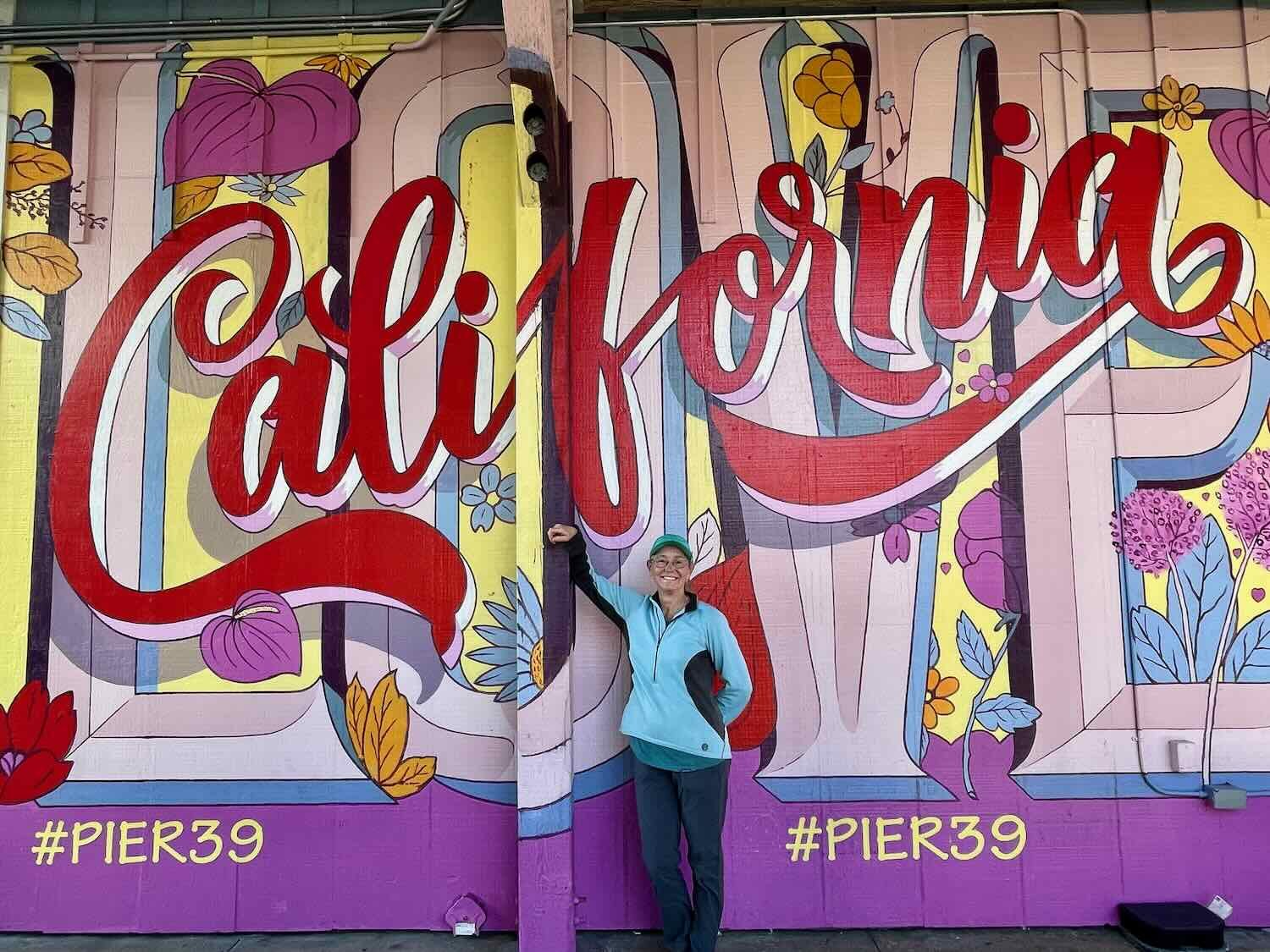
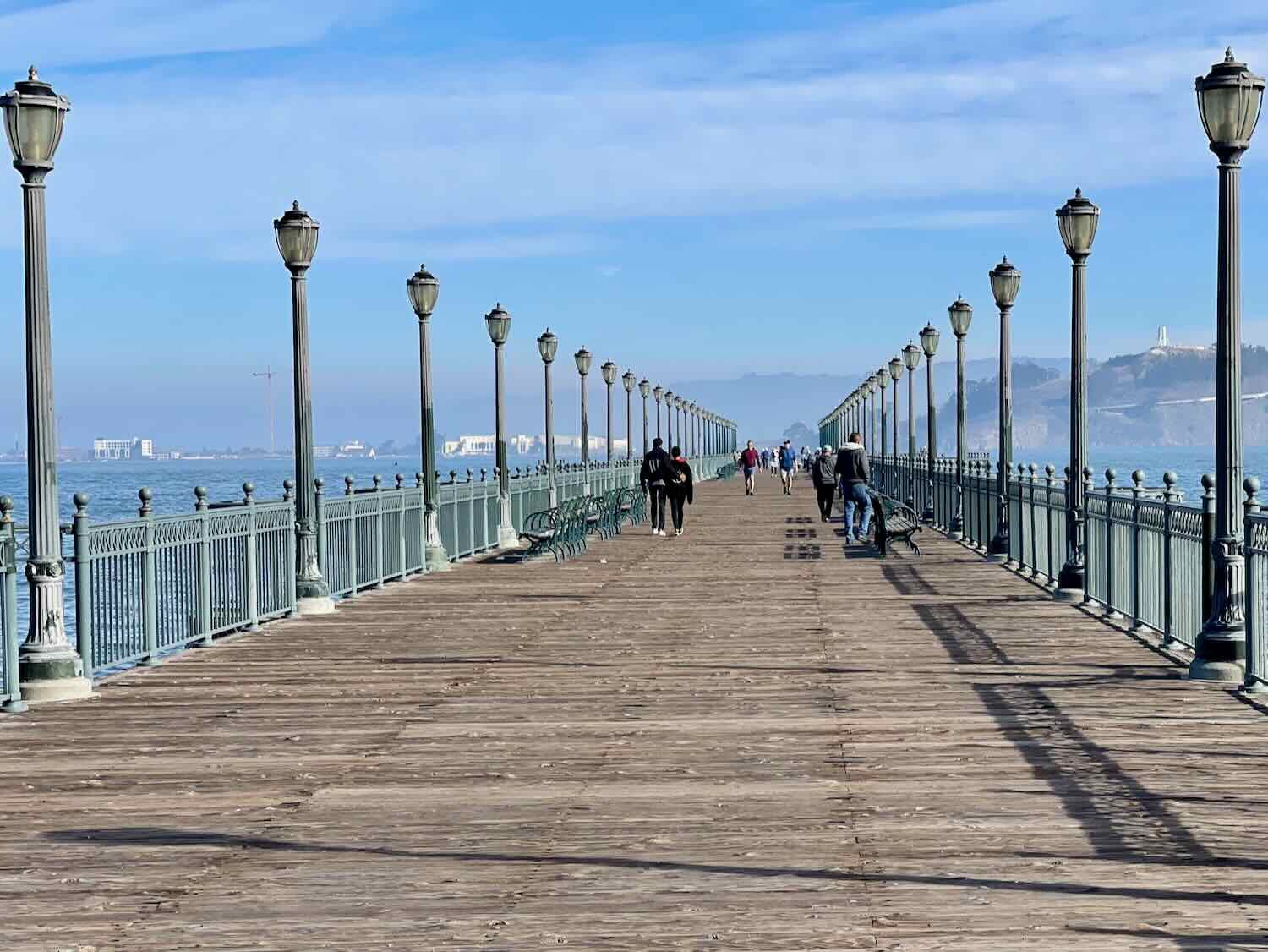
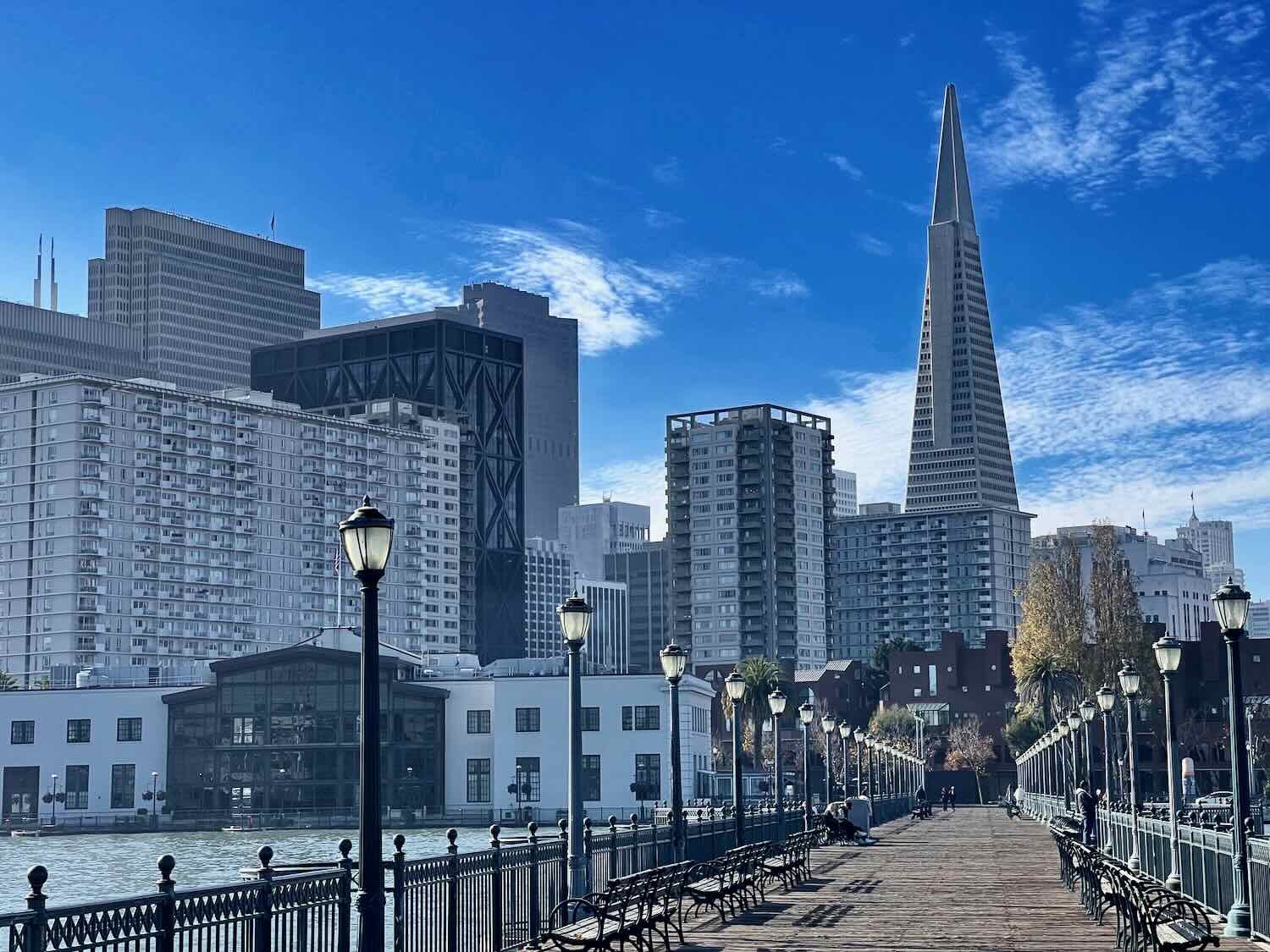
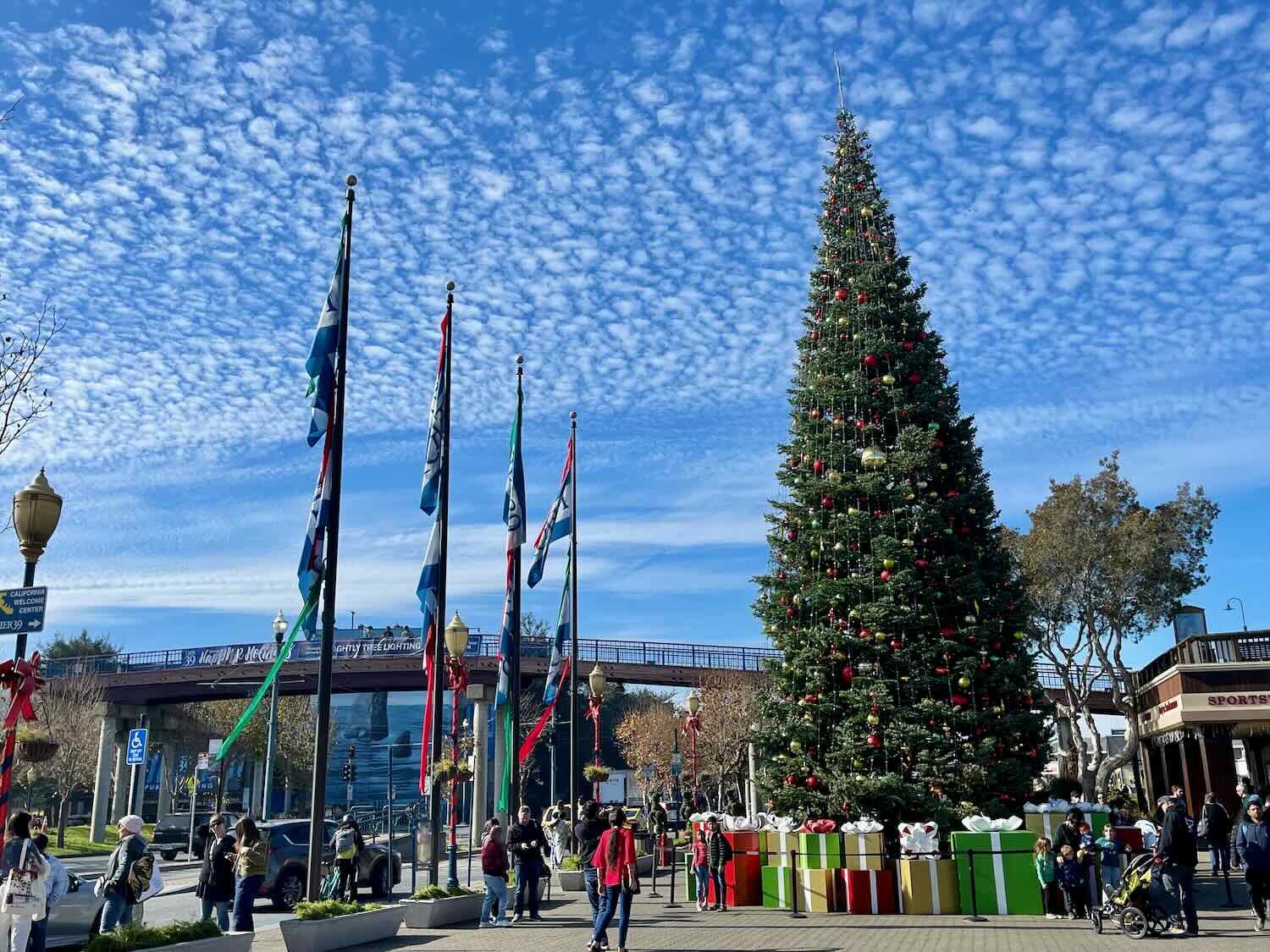

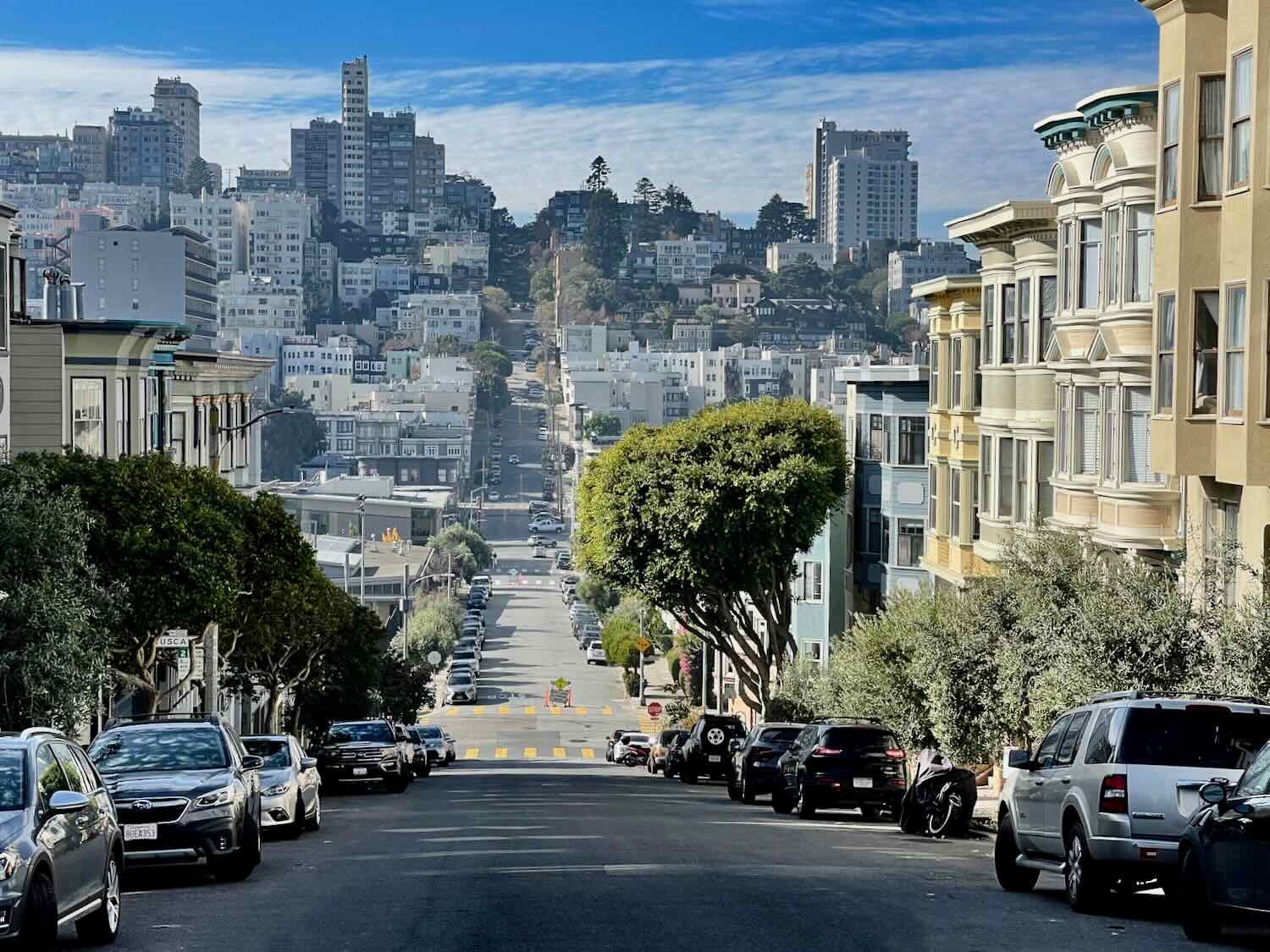
In addition to our sightseeing, we had a bit of business to take care of in San Francisco. After several years of hard use, the battery in one of our iPhones wasn’t holding a charge well anymore. So we stopped by the Apple Store in Union Square to have the battery replaced. Alas, the Apple repair person broke our iPhone in the process of replacing the battery.
That was no small issue, since we do not carry paper maps, and do all our navigating by phone. Apple gave us a new (i.e, remanufactured) phone. Unfortunately, that meant the new iPhone would have to be fully restored from a backup. That’s a very time consuming process - especially with the slow internet usually encountered while traveling. We decided to stay in the Apple Store and use their wifi to restore the iPhone. But given that it was the Friday after Thanksgiving, which is one of the busiest shopping days of the year, the Apple Store was packed with people and their internet was slow. It took a few hours to complete the job.
After walking back to the spot where we hoped to catch the train out of town, we realized that we had just missed it by a few minutes, and that we would have to wait about an hour for the next one. We ended the evening relaxing over smoothies in a local diner, before catching the next-to-last train back to Mill Valley.
Surfing USA
We left Mill Valley via an easy, pleasant ride along the waterfront in Sausalito. That ended when we hit the lung-busting climb up and onto the Golden Gate Bridge. At 300 ft (91 m) it was by no means the highest climb we’ve had lately. But it shoots up at a gradient of 11% for half a mile. It was tiring, but we made it to the top without having to stop.
Crossing the Golden Gate Bridge was a blast. It soars very high over the water below, with panoramic views of the surrounding hills. It was the weekend, so cyclists could use the path on the west side of the bridge, without any pedestrians to contend with. That meant we didn’t get the views of San Francisco or Alcatraz, but the light probably would not have been very good for photos (looking into the sun in the east), anyway. We were totally happy looking out the mouth of the Bay toward the Pacific Ocean.
We slowly made our way through the Presidio Park, then crossed a short section of city streets and rolled into Golden Gate Park. That’s when the riding really got good. Golden Gate Park is a treasure. It was full of people out enjoying the beautiful, sunny day. We meandered past statues, gardens full of flowers in bloom, hot dog vendors, and museums in a pleasing kaleidoscope of city life.
A giant, dog’s-head sculpture was one of several stationed along a car-free road in Golden Gate Park. They were rescued when a long-time San Francisco restaurant, the Doggie Diner, went out of business, and have been restored to their former glory. San Francisco, California, USA. Copyright © 2019-2023 Pedals and Puffins.
Turning southward along the Pacific Coast, we cycled for another half hour on roads reserved just for pedestrians and cyclists. It was one of the easiest, least hectic, and most enjoyable crossings of a major city we’ve ever had.
South of the city we cycled along back roads through suburbs like Pacifica and Broadmoor. There were some surprisingly long climbs, keeping us in our lowest gears for three to four miles at a time. The payoff was that there were some awesome views from the heights. We were particularly impressed with the sudden, large crowds of surfers that now populated the waves near shore.
From the top of a big hill we could see hoards of surfers in the waves at Pacifica Beach. California, USA. Copyright © 2019-2023 Pedals and Puffins.
We arrived at Half Moon Bay surprisingly early, with enough time to take a pleasant walk along the beach while it was still light. We saw sanderlings trying to outrun the waves on the beach, and surf scoters diving in the waves offshore. Signs at the park reminded us that the northern part of Half Moon Bay is the location of Maverick’s, the famous surfing spot that gets huge waves a couple of times each winter - when big offshore storms drive water toward the shoals.
Back at camp we were winding down for the evening when we noticed a puff of dirt being launched a few inches into the air, from a patch of lawn not far away. The ground nearby was festooned with little dirt mounds from gophers, so we were pretty sure we knew what was going on. But we had never seen a gopher above ground, and they are usually extremely shy. We watched the spot where the puff of dirt had appeared, hoping to see something more. Then, puff! There was another shot of dirt. We inched closer, and sure enough there was a Botta’s pocket gopher doing some home improvements on its hole. We watched the gopher for 15-20 minutes as it popped up and down, working on its project. That was pretty cool.
Sunset over Half Moon Bay. California, USA. Copyright © 2019-2023 Pedals and Puffins.
During the night we had a stroke of bad luck. PedalingGuy’s sleeping pad sprung a leak. He had to re-inflate it several times. Not a good way to spend the night. We would have to try and locate the hole soon, and hopefully be able to patch it.
We stopped in the town of Half Moon Bay for a nice warm breakfast. The cashier asked us which direction we were traveling. When we told her we were heading south, she brightened up and said that was a beautiful drive. It gave us something to look forward to.
But we weren’t going to have much success seeing the views. As we rolled out of town, a heavy fog rolled in from the Pacific. It lasted for several hours, obscuring any vistas we might have had of the ocean. Even when the fog lifted a bit, everything remained in soft focus.
A misty morning along Hwy 1. South of Half Moon Bay, California, USA. Copyright © 2019-2023 Pedals and Puffins.
Ocean and cliffs in soft focus. Paisley Rock, Pescadero State Beach, California, USA. Copyright © 2019-2023 Pedals and Puffins.
One of the more unique wildlife sightings that day was a leucistic (partial albino) red-shouldered hawk. Most of its feathers were white, except for the ones on its head. It was very striking. Hwy 1 South of Pescadero, California, USA. Copyright © 2019-2023 Pedals and Puffins.
We got a kick out of spotting some greater white-fronted geese out in a field. We hadn’t seen this species since cycling in Alaska, where they kept us awake by honking all “night” in the 24-hr daylight along the Dalton Highway. Now we had all migrated south for the winter. Hwy 1 South of Pescadero, California, USA. Copyright © 2019-2023 Pedals and Puffins.
We approached the city of Santa Cruz along the waterfront. First we spotted the lighthouse out on a rugged point of land. Then we rode onto the bustling riverwalk, overlooking the the sea. Of course, there continued to be lots of surfers in the water. Santa Cruz has such a big surfing culture that they even host the Surfing Museum. Finally, our path took us to the doorstep of the Santa Cruz Boardwalk, with its iconic amusement park.
The Santa Cruz Lighthouse heralded our arrival in the city. Santa Cruz, California, USA. Copyright © 2019-2023 Pedals and Puffins.
A surfer catches a wave near Pleasure Point Beach. Santa Cruz, USA. Copyright © 2019-2023 Pedals and Puffins.
Santa Cruz’s Surfing Monument is dedicated “to all surfers, past, present and future.” When we cycled by, the statue was wearing a festive, holiday cap. Santa Cruz, California, USA. Copyright © 2019-2023 Pedals and Puffins.
The lively skyline of the Santa Cruz Boardwalk’s amusement park. Santa Cruz, California, USA. Copyright © 2019-2023 Pedals and Puffins.
We got a motel room in town and set to work on trying to find the leak in PedalingGuy’s Nemo Tensor sleeping pad. We were surprised to discover that it was leaking on top - not what you would expect if the hole had been caused by a puncture from below. After examining the leak, we reached the conclusion that the hole was actually a very small tear in the fabric. The tear was caused when the fabric started to delaminate, a known problem with the newer, inflatable pads. It seemed like a defect in the pad.
But even though the pad was covered by a lifetime guarantee against such defects, the only way to get a replacement from the manufacturer would be to send the pad back to them for evaluation. The whole process can take 6-10 weeks, and would require a return mailing address. It would be challenging to go without a sleeping pad for 6-10 weeks, not to mention the logistical hurdles of shipping the pad back to the manufacturer, and figuring out how to receive a new one in the mail while traveling.
In the end, we decided it was best just to get a new pad. As luck would have it, we would be staying near an REI store in the next town down the road. So PedalingGuy wouldn’t have to sleep on the hard ground, after all.
Fruits and Vegetables
Not long after leaving in the morning, we pedaled out into a broad, flat valley that was wall-to-wall farms. We rode on dusty roads through huge fields of strawberries, Brussels sprouts, artichokes and cauliflowers. It was a fascinating change of pace.
The big town in the valley was Moss Landing. Signs trumpeted breathtakingly cheap produce from roadside stands. Avocados in the grocery store are outrageously priced these days (based on a supposed avocado shortage), but here you could pick up seven for $1. They were bacon avocados (not Hass, the most popular variety) but it was still a bargain. Other fruit on offer included kiwis (9 for $1), artichokes and strawberries.
You can’t beat that price for avocados! Moss Landing, California, USA. Copyright © 2019-2023 Pedals and Puffins.
Fresh Brussels sprouts and avocados for sale. Moss Landing, California, USA. Copyright © 2019-2023 Pedals and Puffins.
A bronze Indian rode over the hill. Moss Landing, California, USA. Copyright © 2019-2023 Pedals and Puffins.
We spotted some long-billed dowitchers resting in a shallow slough. Moss Landing, California, USA. Copyright © 2019-2023 Pedals and Puffins.
Unfortunately, as the day progressed the wind began to blow harder. By the afternoon we were cycling into a wicked, 20-25 mph headwind. We hadn’t had to deal with wind like that for quite a while, and it was an unwelcome change of pace. We were worn out when we finally reached our motel in Marina.
Rain Days in Marina, California
We ended up spending quite a bit more time in Marina than originally planned. Two days soon became five. The main reason was that the forecast after the second day called for heavy rain. But the decision to stay was made even easier by the fact that we had a very large and comfortable motel room with great wifi. Plus, there were lots of dining options and an REI store within walking distance (where we were able to pick up a new sleeping pad for PedalingGuy). So it was a pretty good place to hang out.
In the end, Marina got about two inches of rain while we were there, enough to cause some localized flooding. For the most part, we stayed inside.
But we did get out and about on one rain-free day. We cycled into the popular community of Monterey to visit the Monarch butterfly wintering site at Pacific Grove. The story of how Monarchs migrate north over multiple generations, then return to spend winters along the California coast, is truly amazing. While we were out, we also learned that there is an endangered butterfly (the Smith’s Blue) right there on the sand dunes in Marina. Here are some of the photos from that day:
Western bluebird. Villa del Monte, Monterrey, California, USA. Copyright © 2019-2023 Pedals and Puffins.
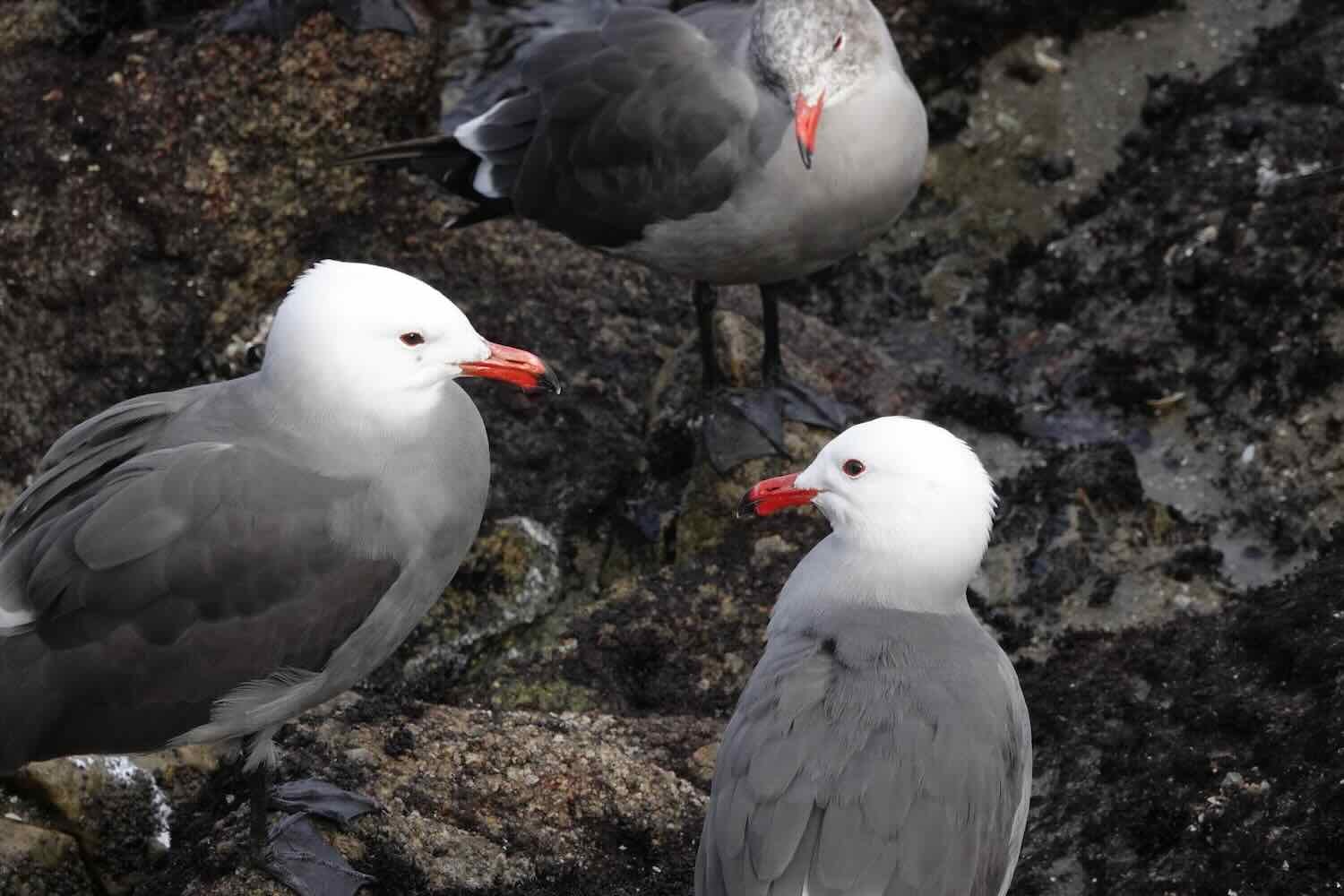
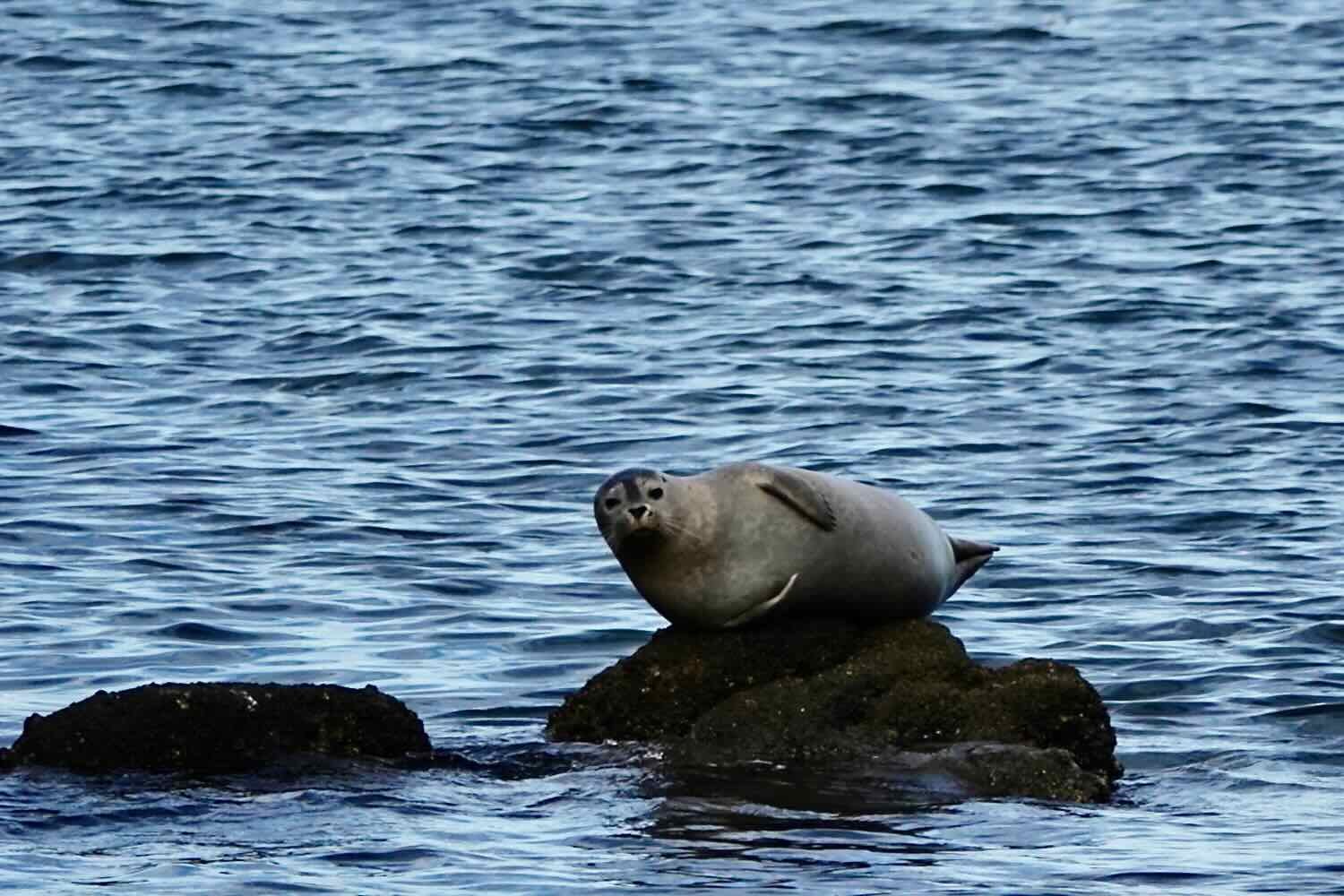
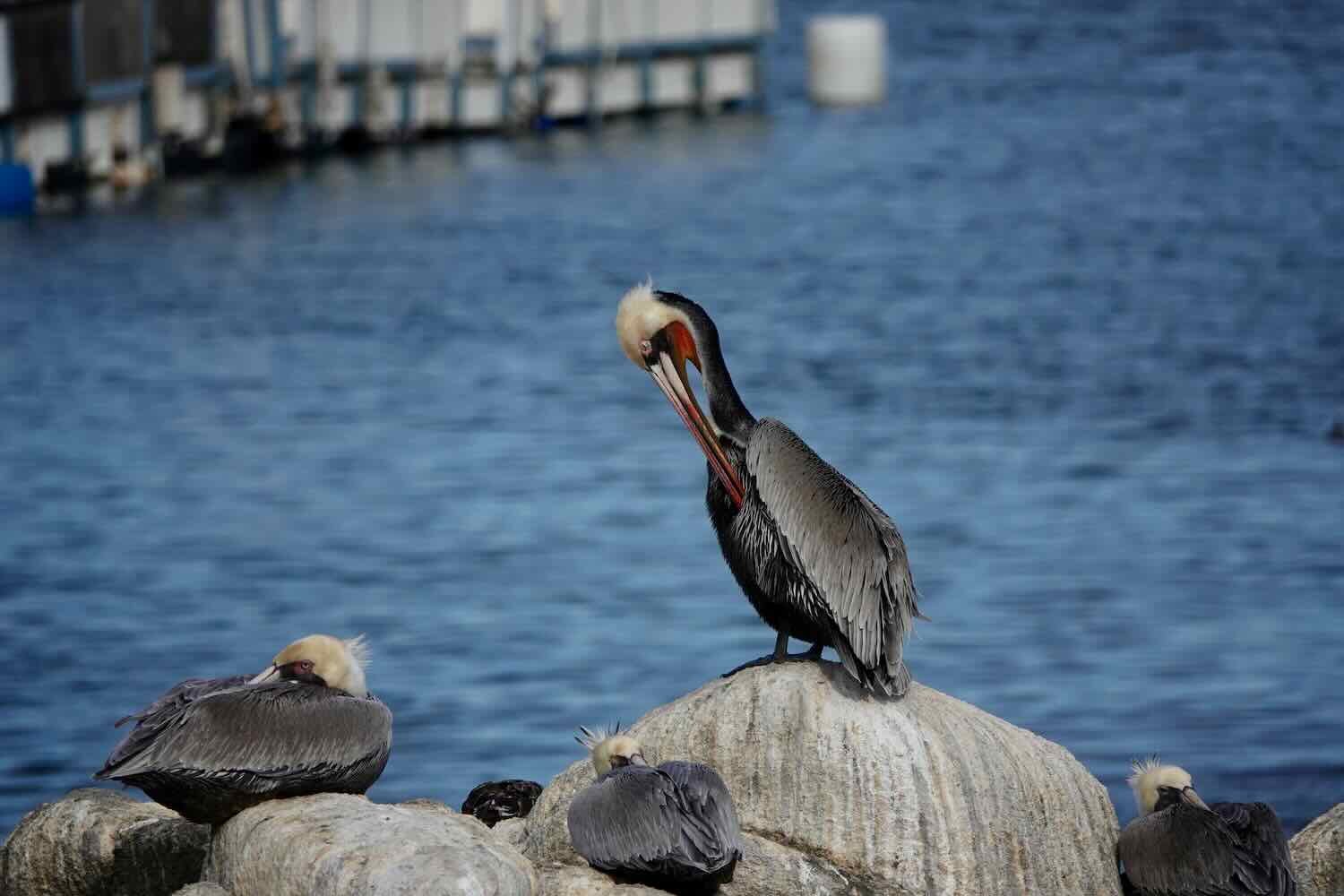
Colorful shacks on a pier at Fisherman’s Shoreline Park, Monterey, California, USA. Copyright © 2019-2023 Pedals and Puffins.
A pine bough laden with over-wintering Monarch butterflies. Pacific Grove, Monterey, California, USA. Copyright © 2019-2023 Pedals and Puffins.
One more shot with the boys at Cannery Row. Monterey, California, USA. Copyright © 2019-2023 Pedals and Puffins.
Epilogue
One other event is worth mentioning. On the final night in Marina, we were walking back to our motel on a sidewalk, after dinner. It was raining and dark. Suddenly, a pickup truck came barreling down the road and tried to pass another car on the right-hand side. At a high speed, the pickup careened onto the sidewalk where we were walking, and came within a few inches of hitting PedalingGuy. Moments later, a policeman turned on his flashing lights and chased after the truck.
It all happened really fast, and it took us a minute to fully process what had just happened. But basically, we were almost run over by a truck. It seemed ironic, since we were walking on the sidewalk (normally considered very safe), and weren’t even on our bikes.
We walked into a convenience store, and a guy in the store had seen the whole thing. He asked if we were okay, and shook his head at the craziness of the truck driver. We were lucky. You never know what could happen when you’re out in the world.

